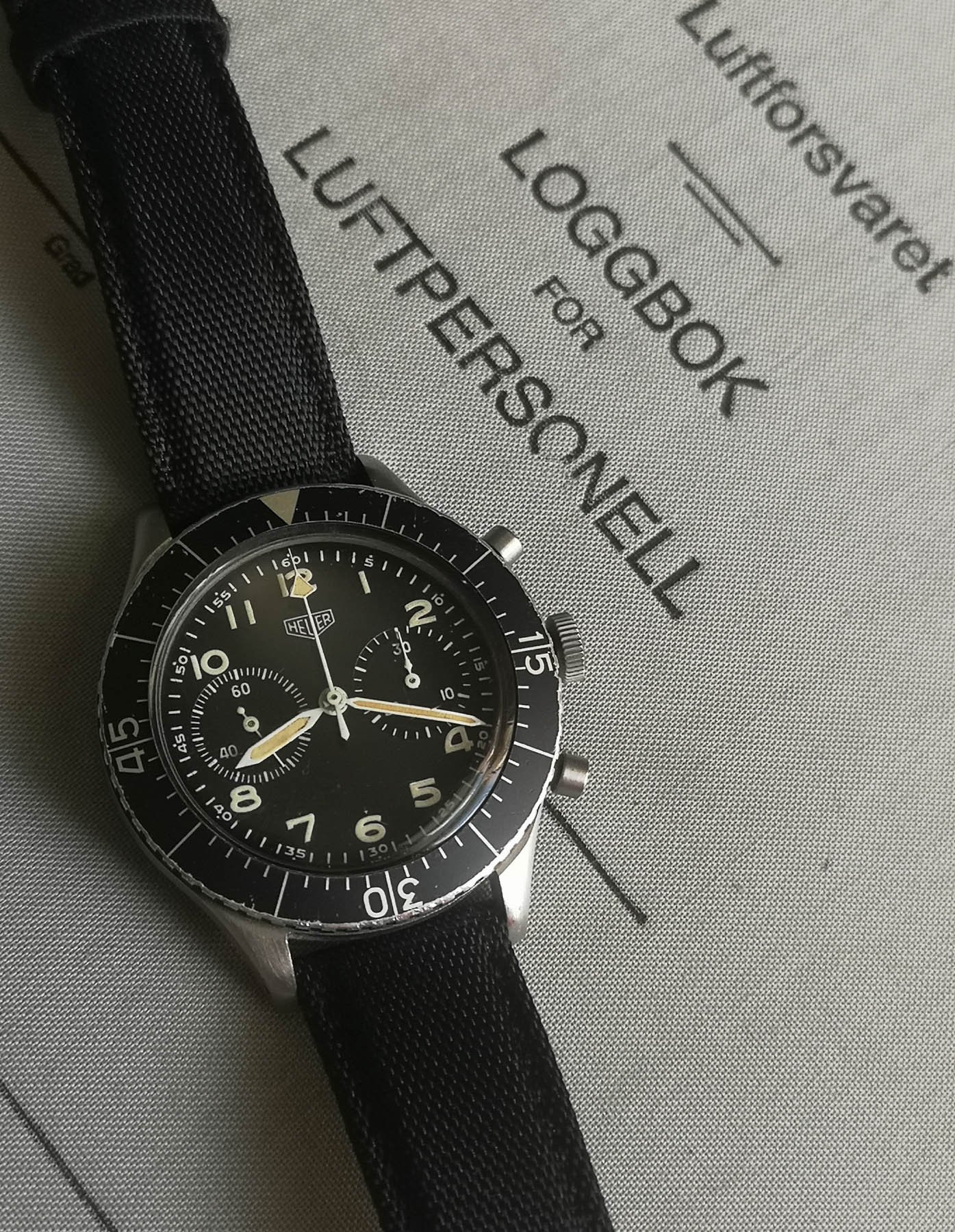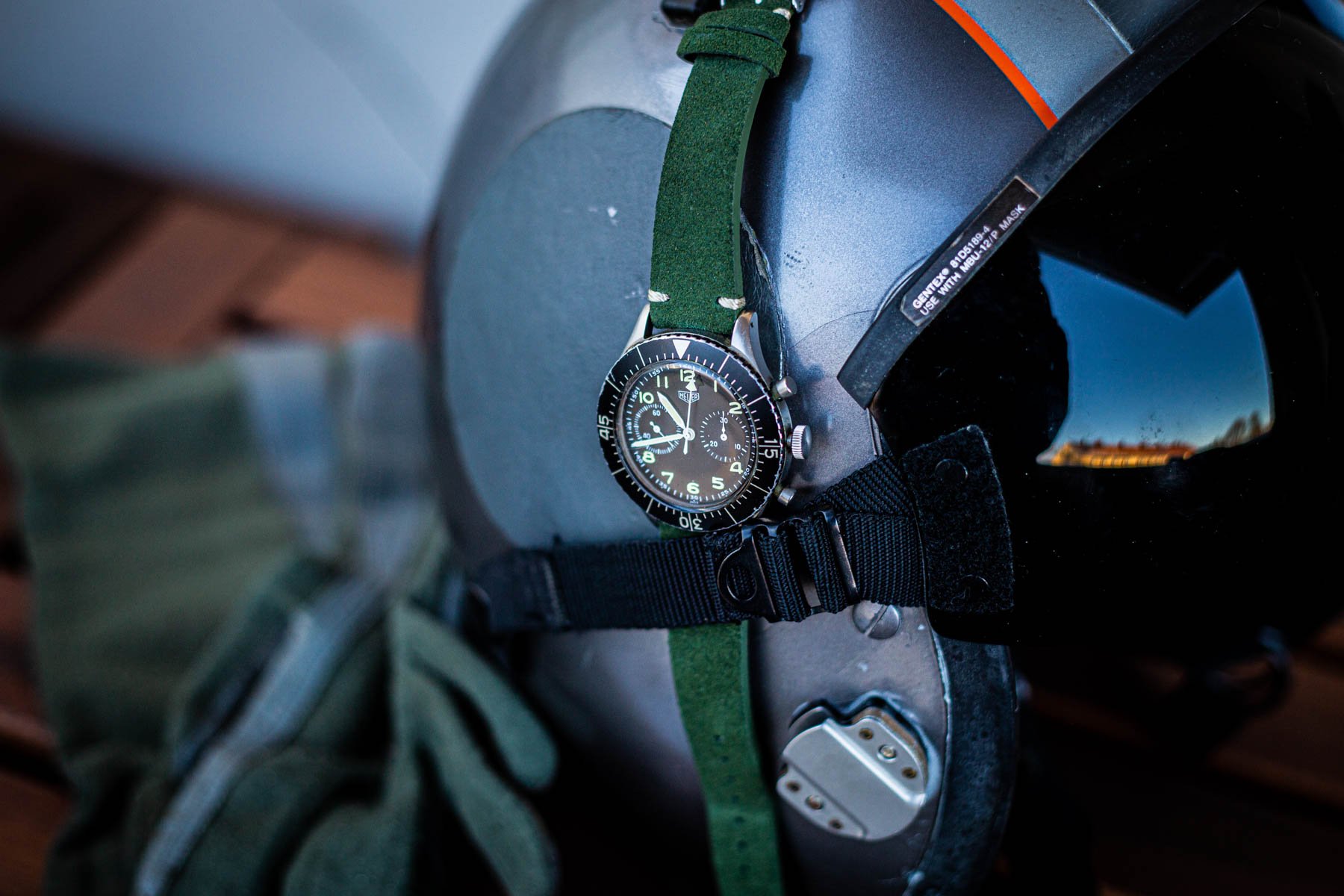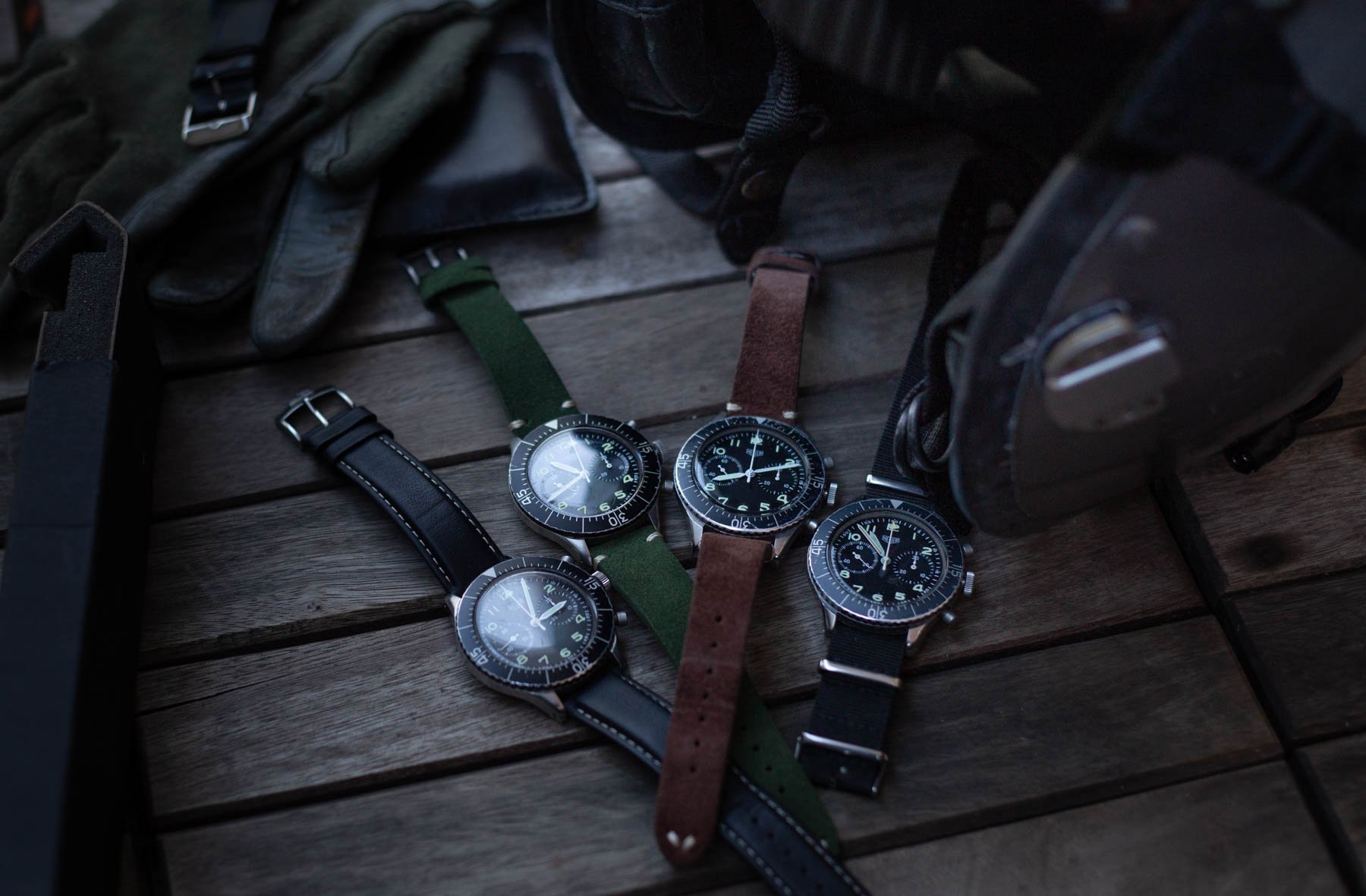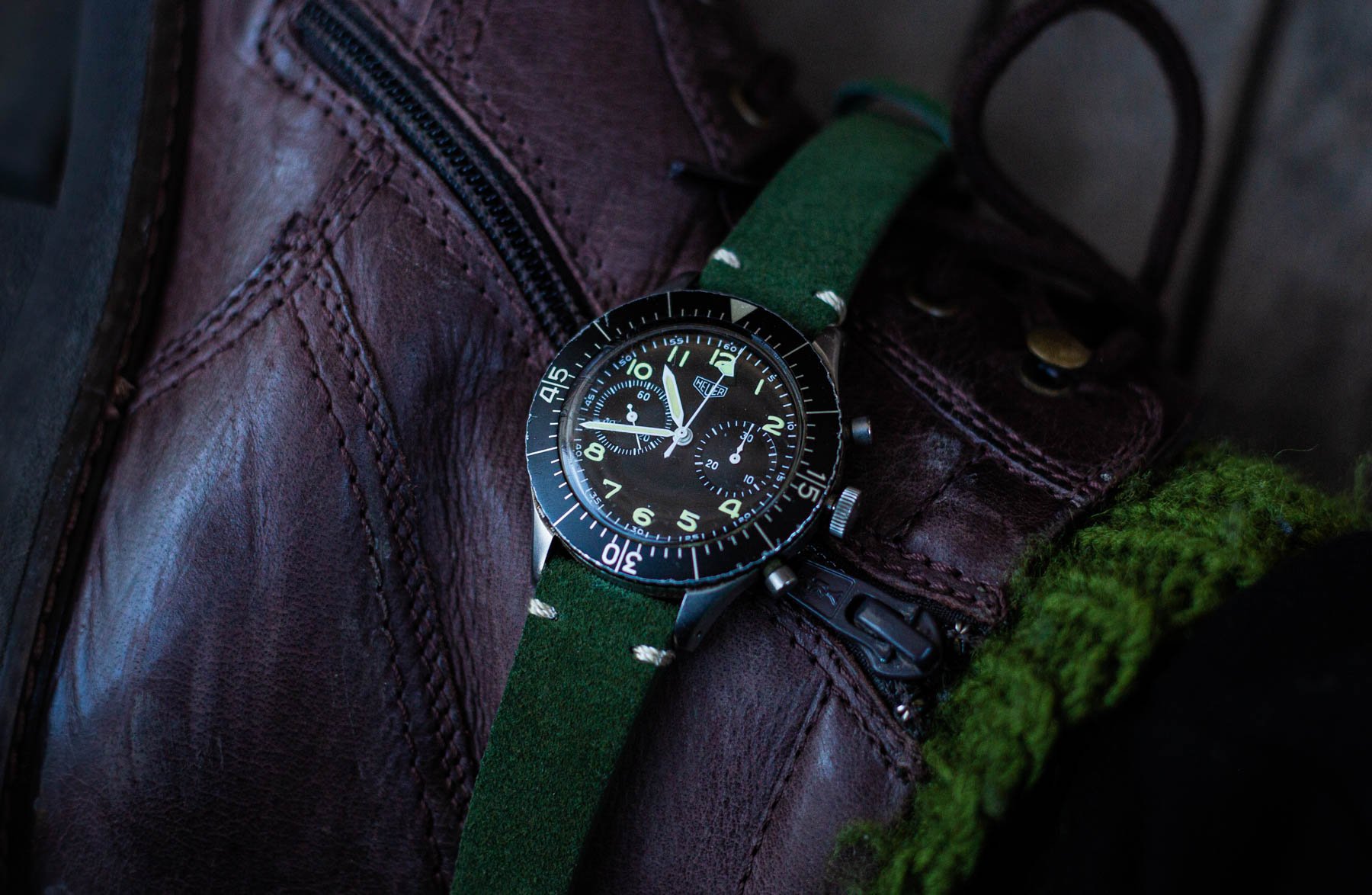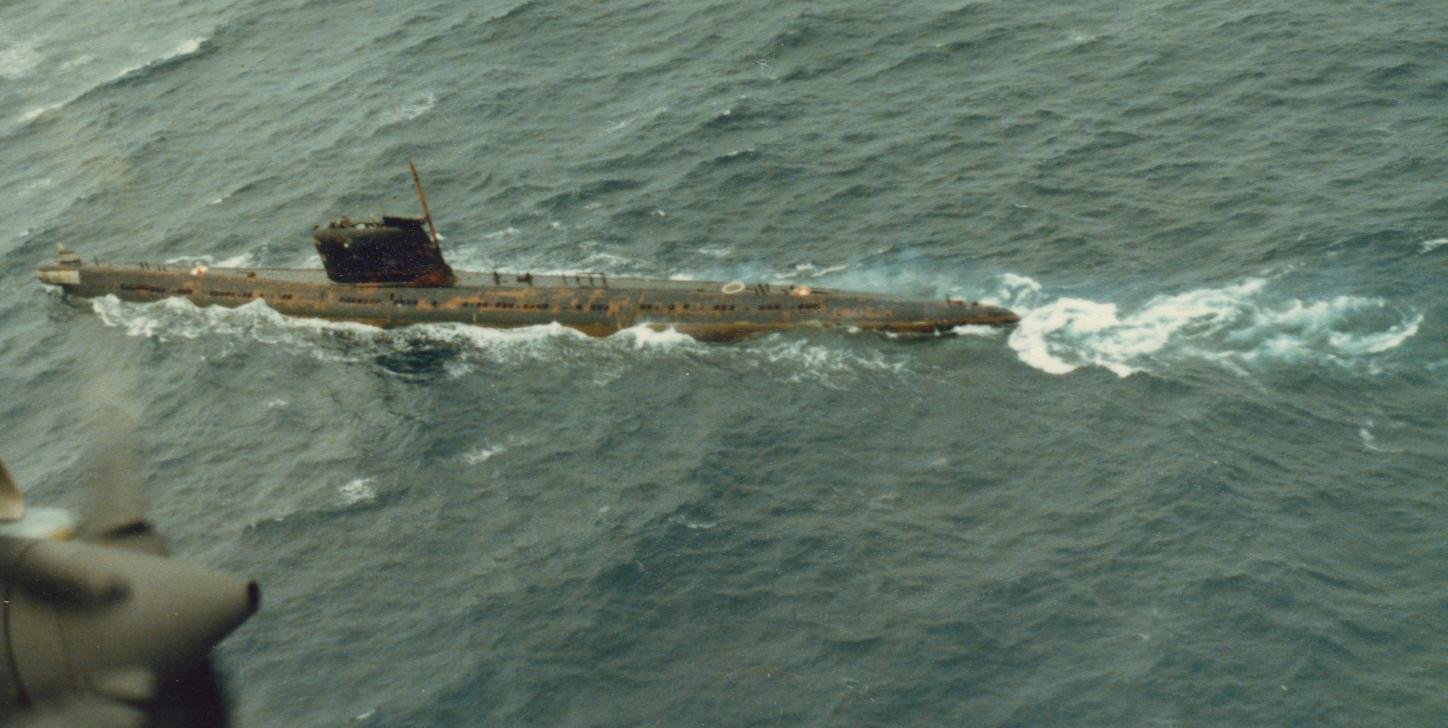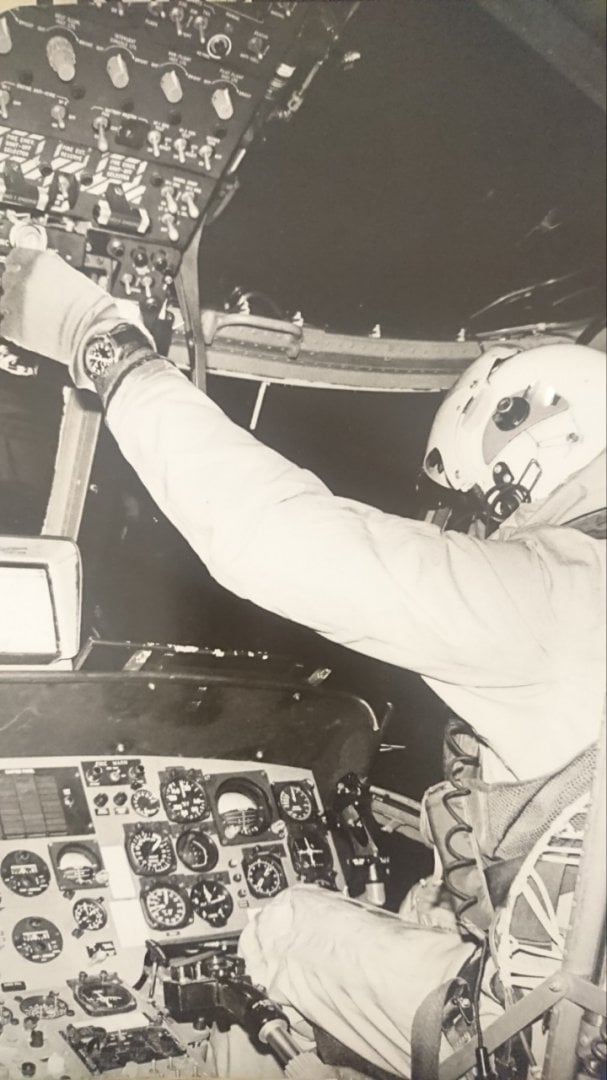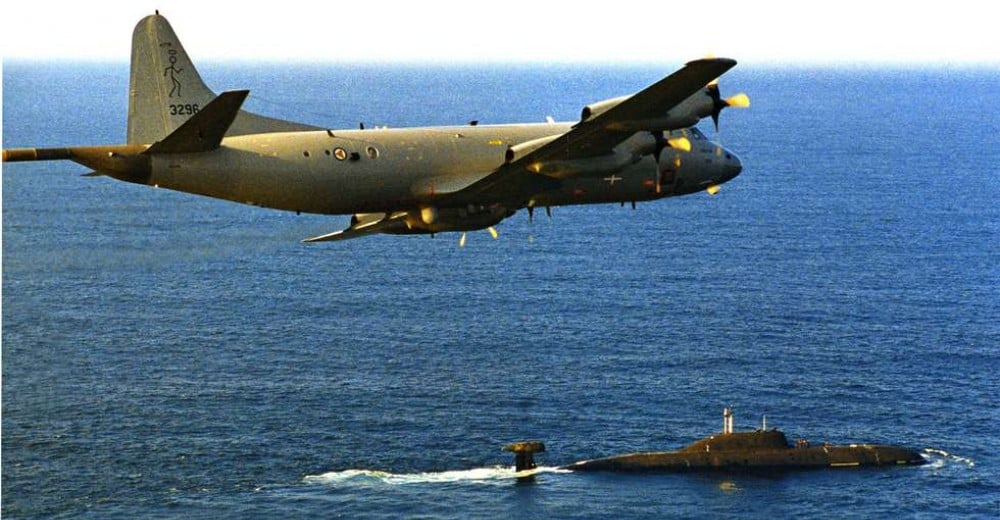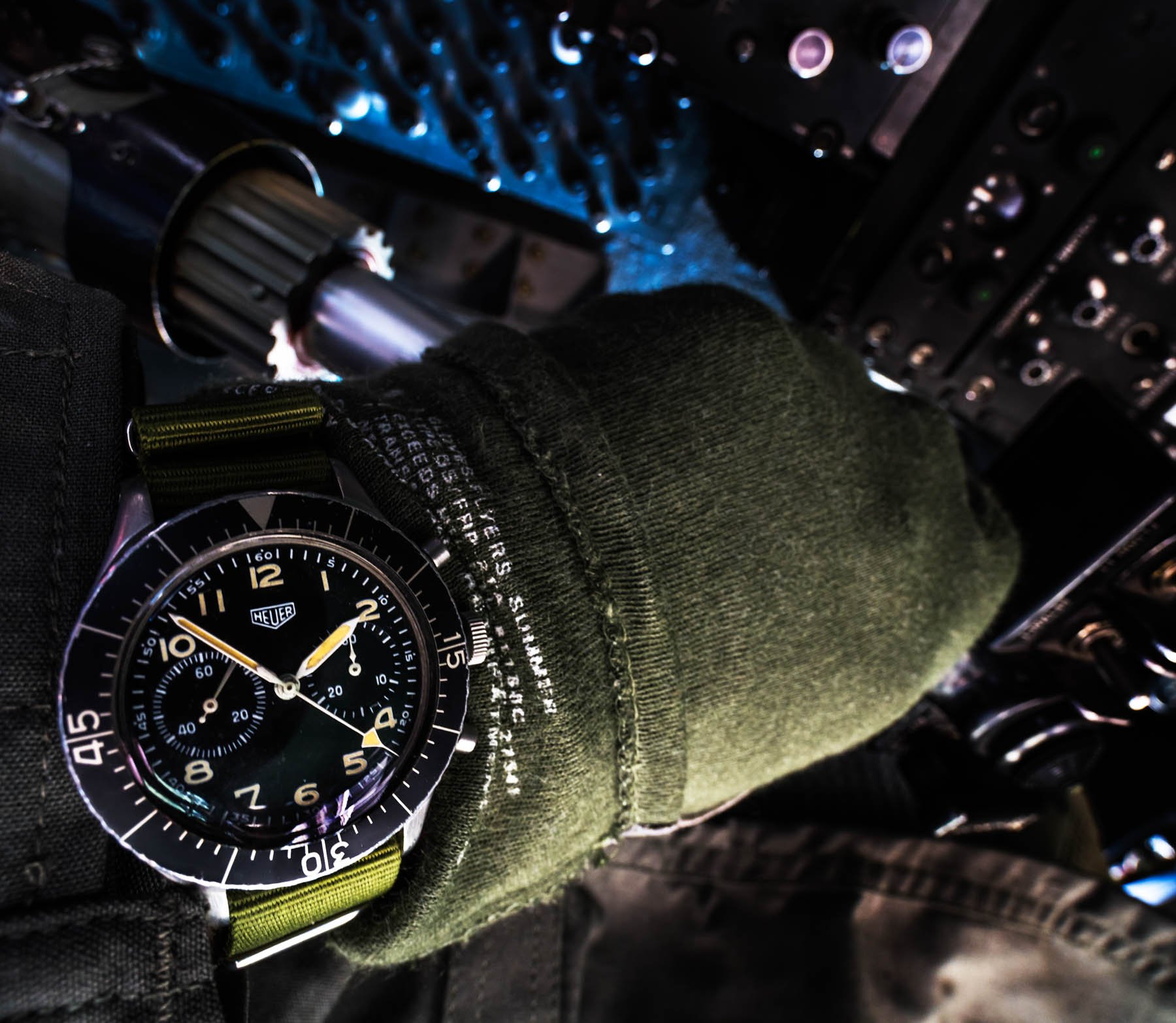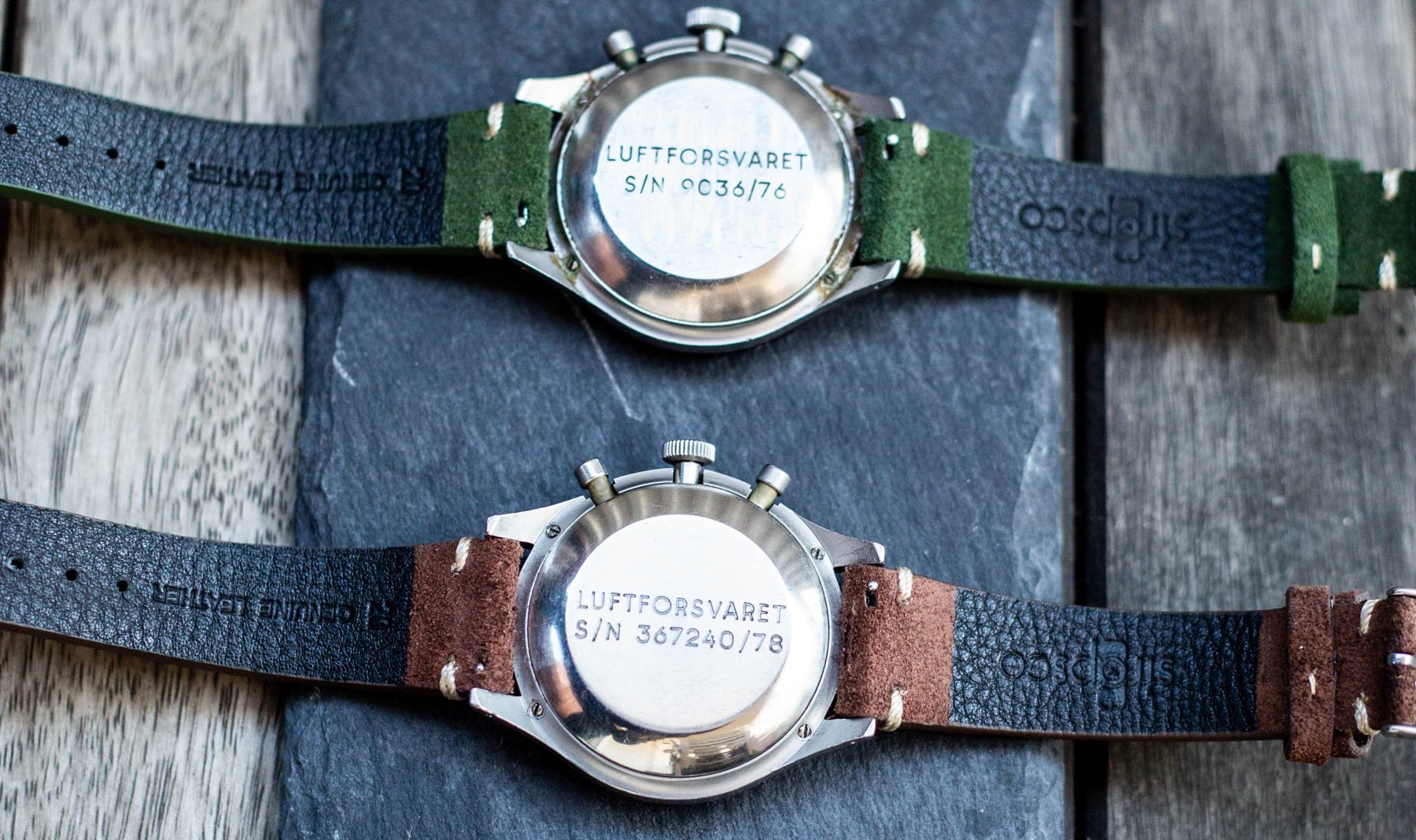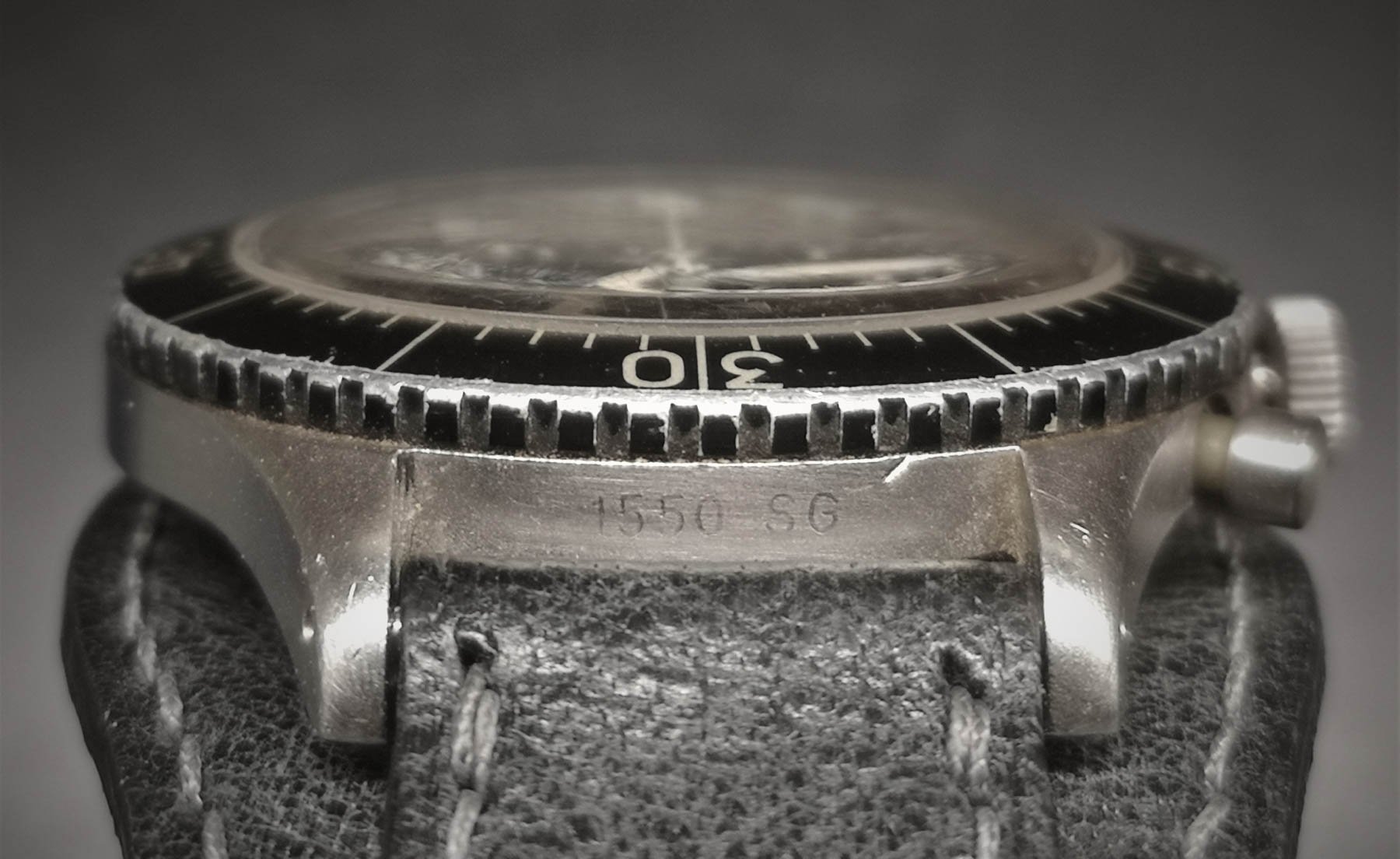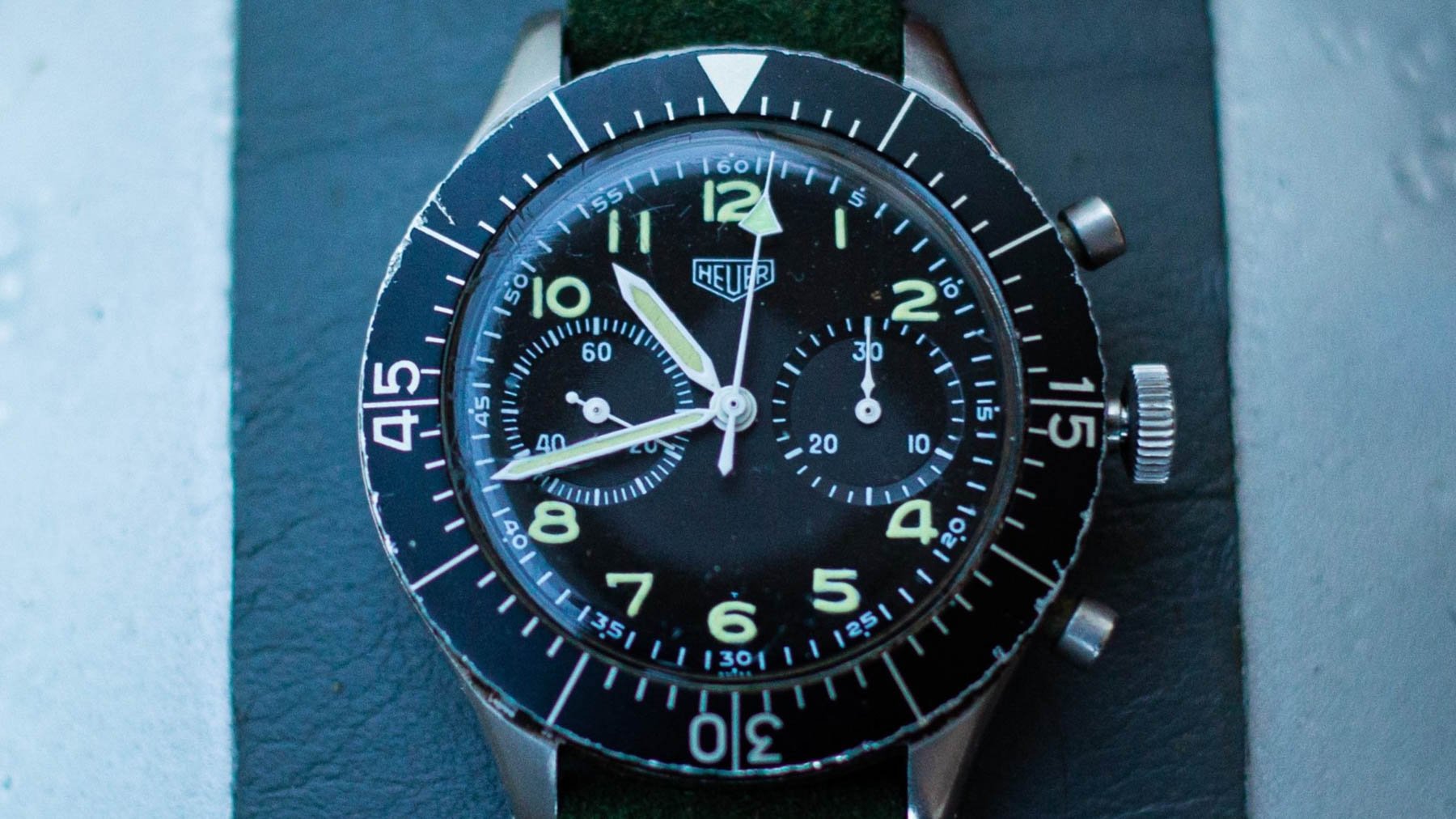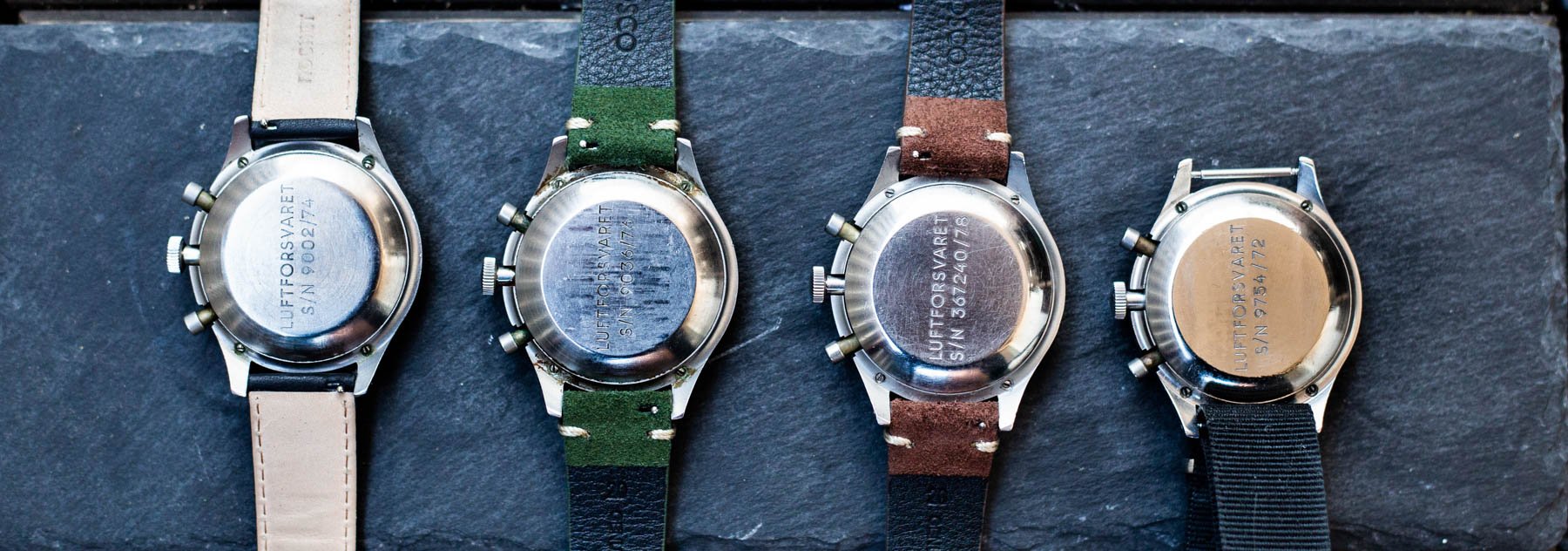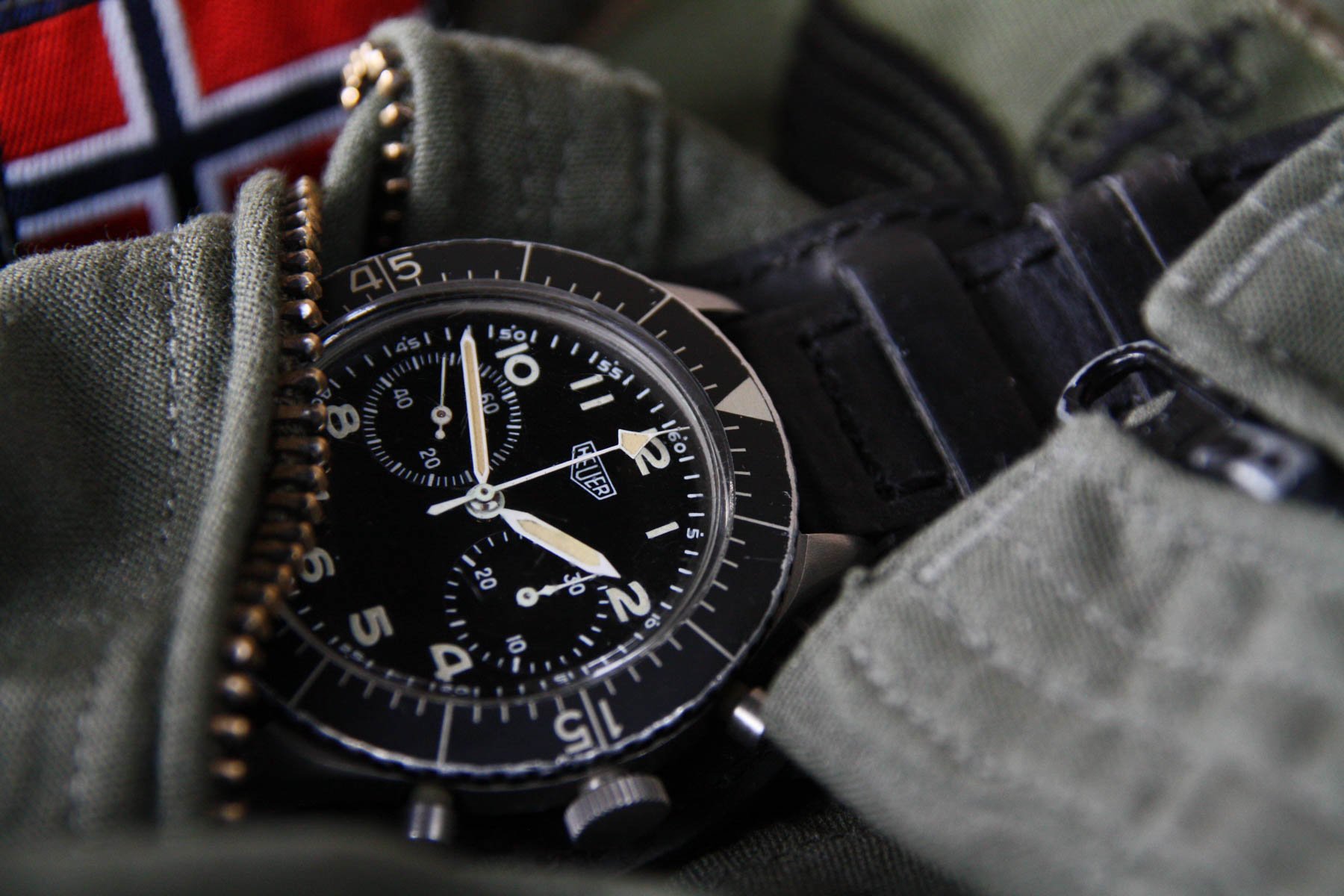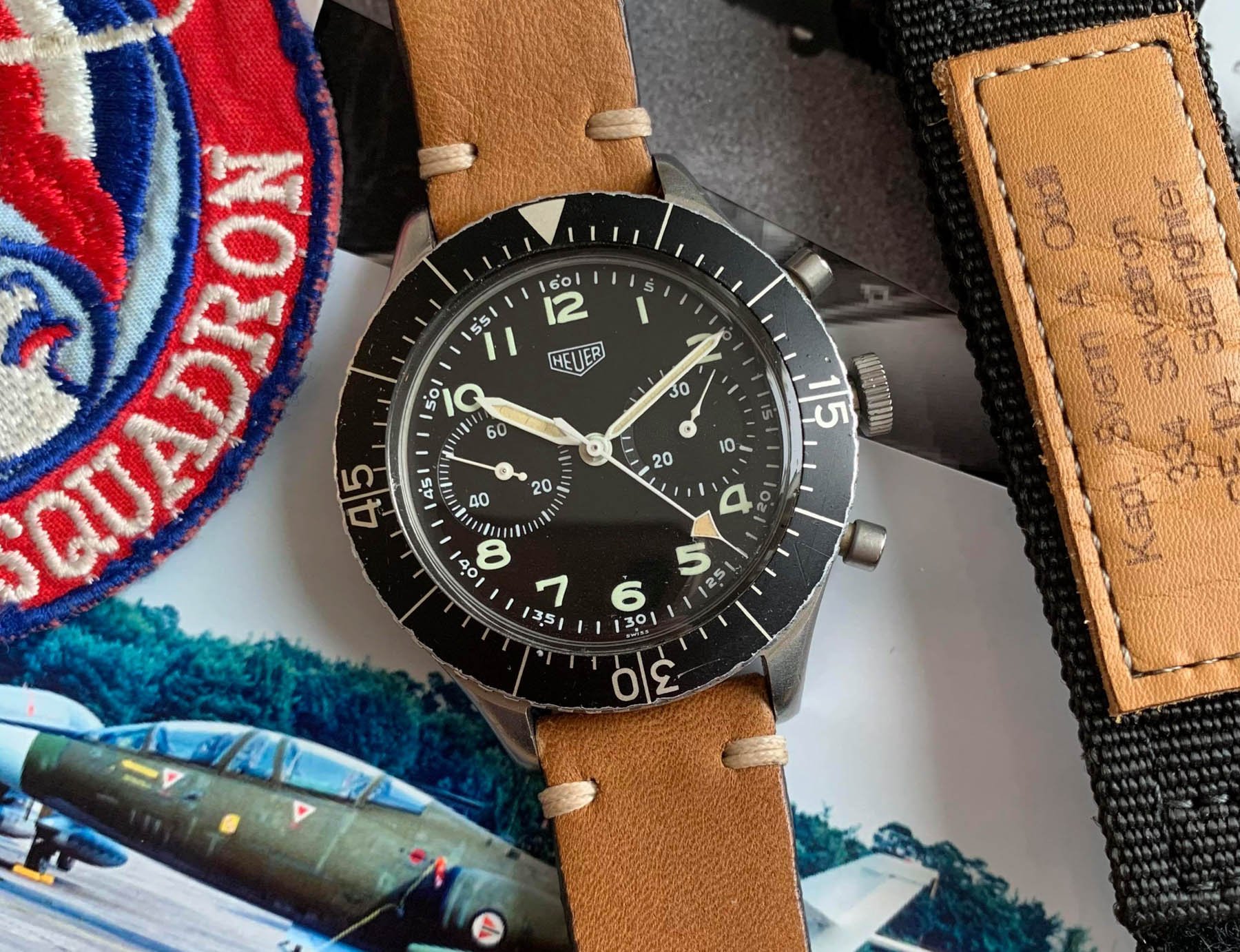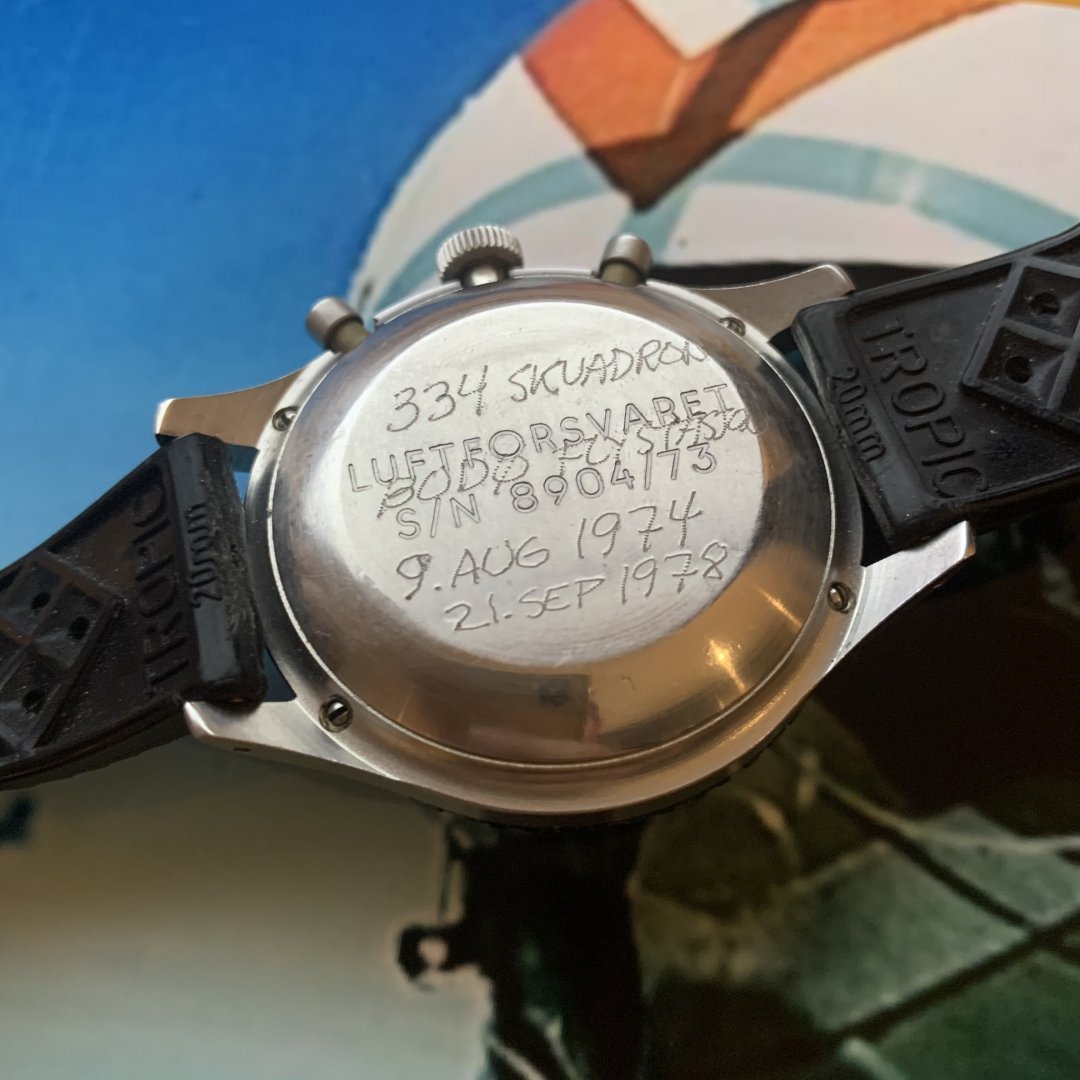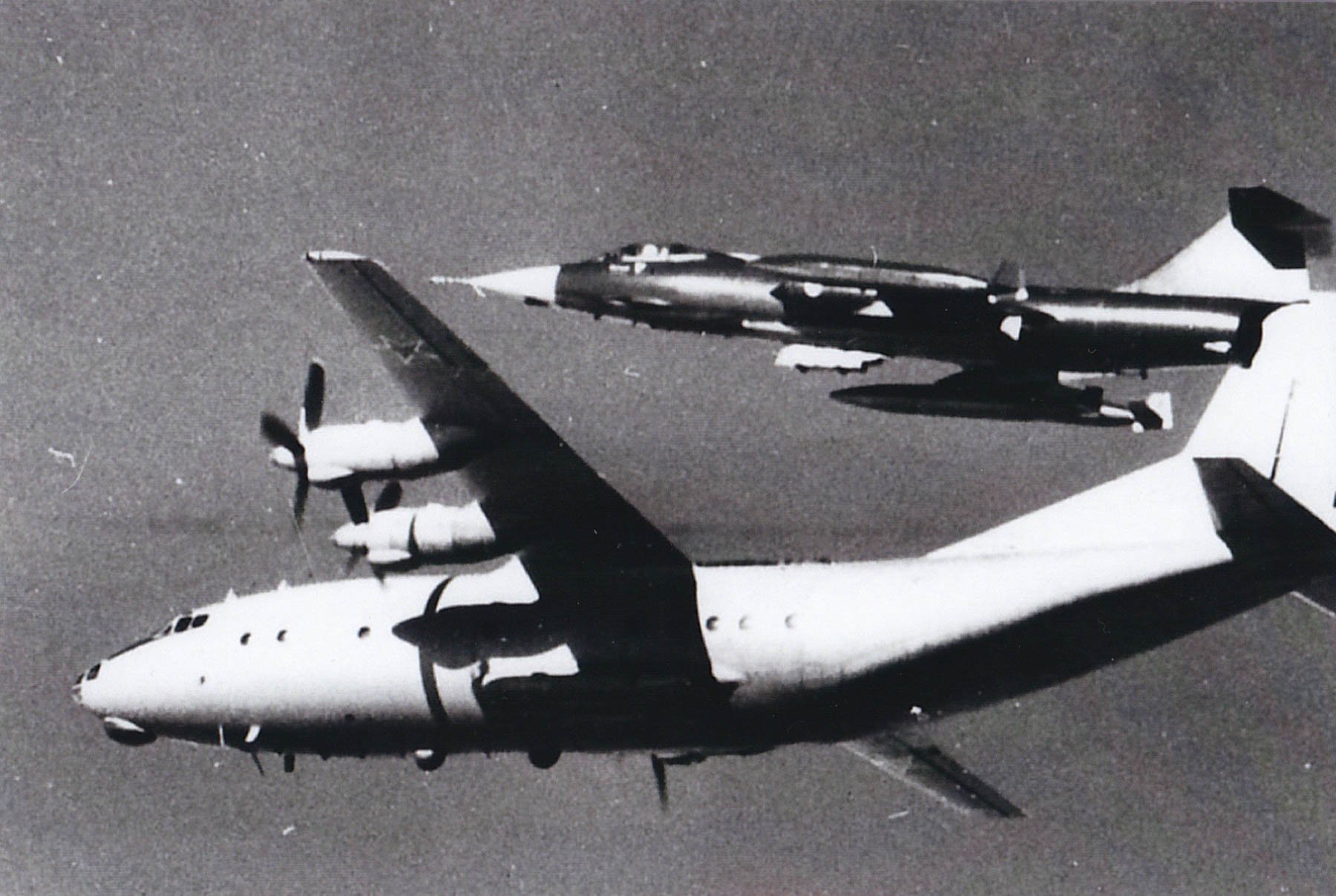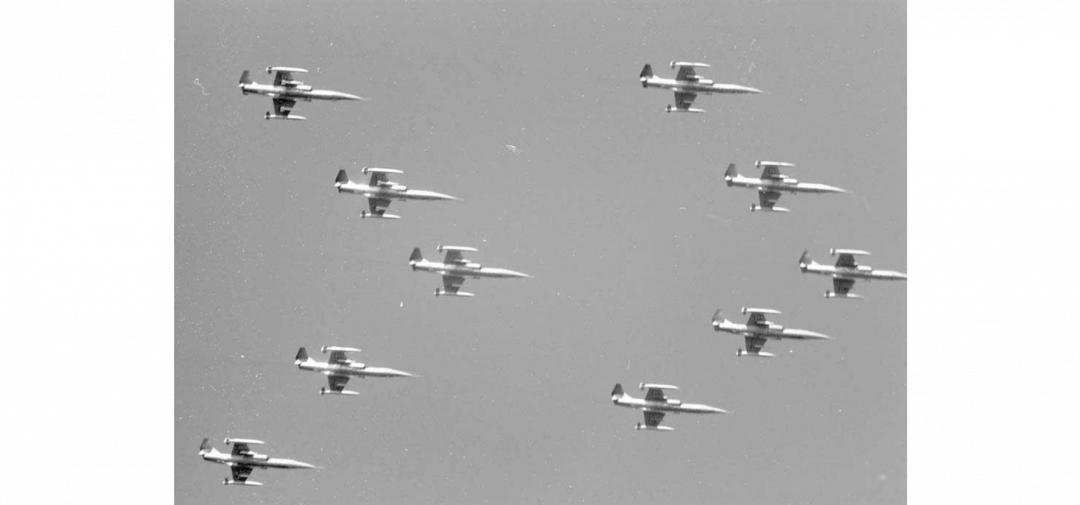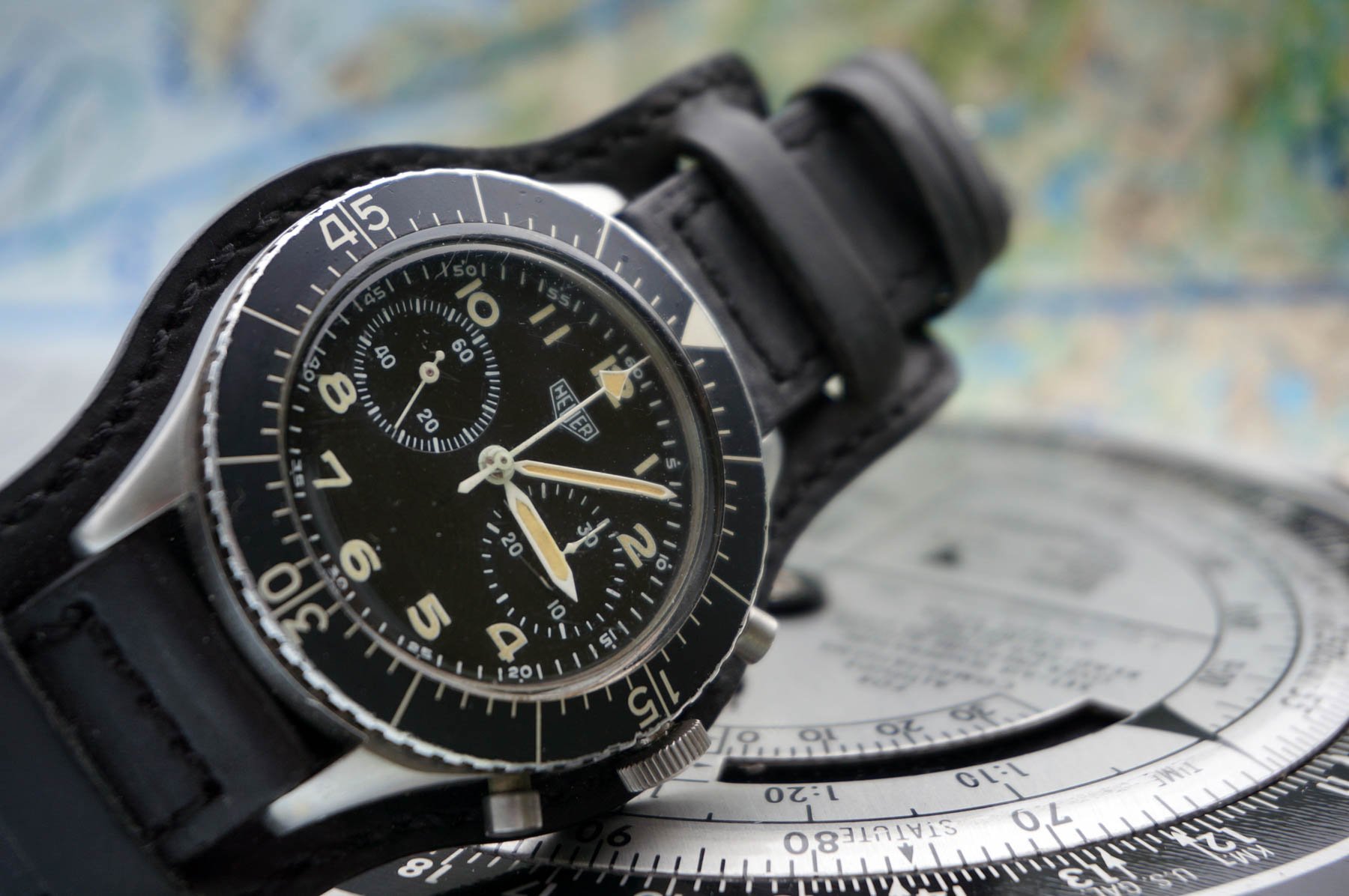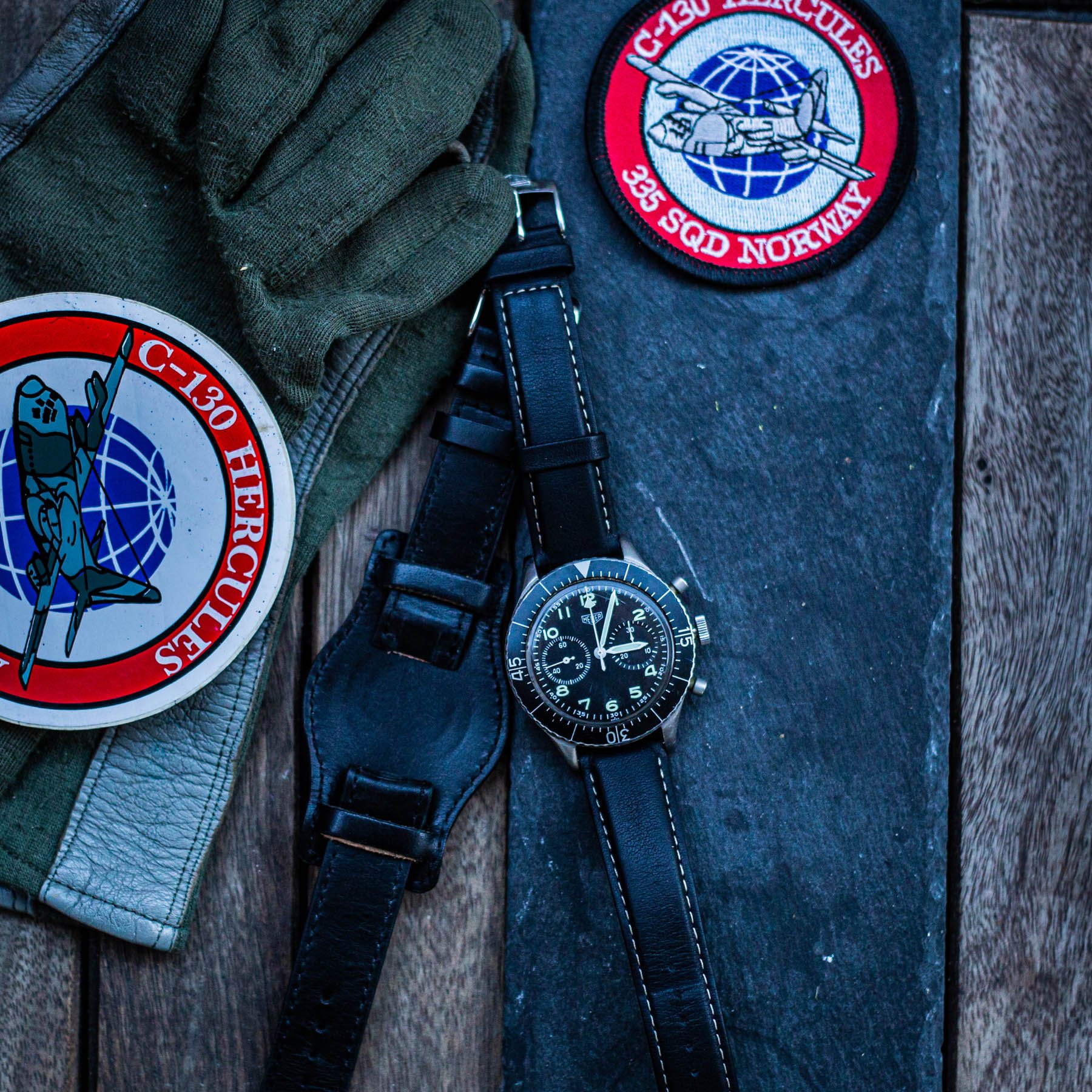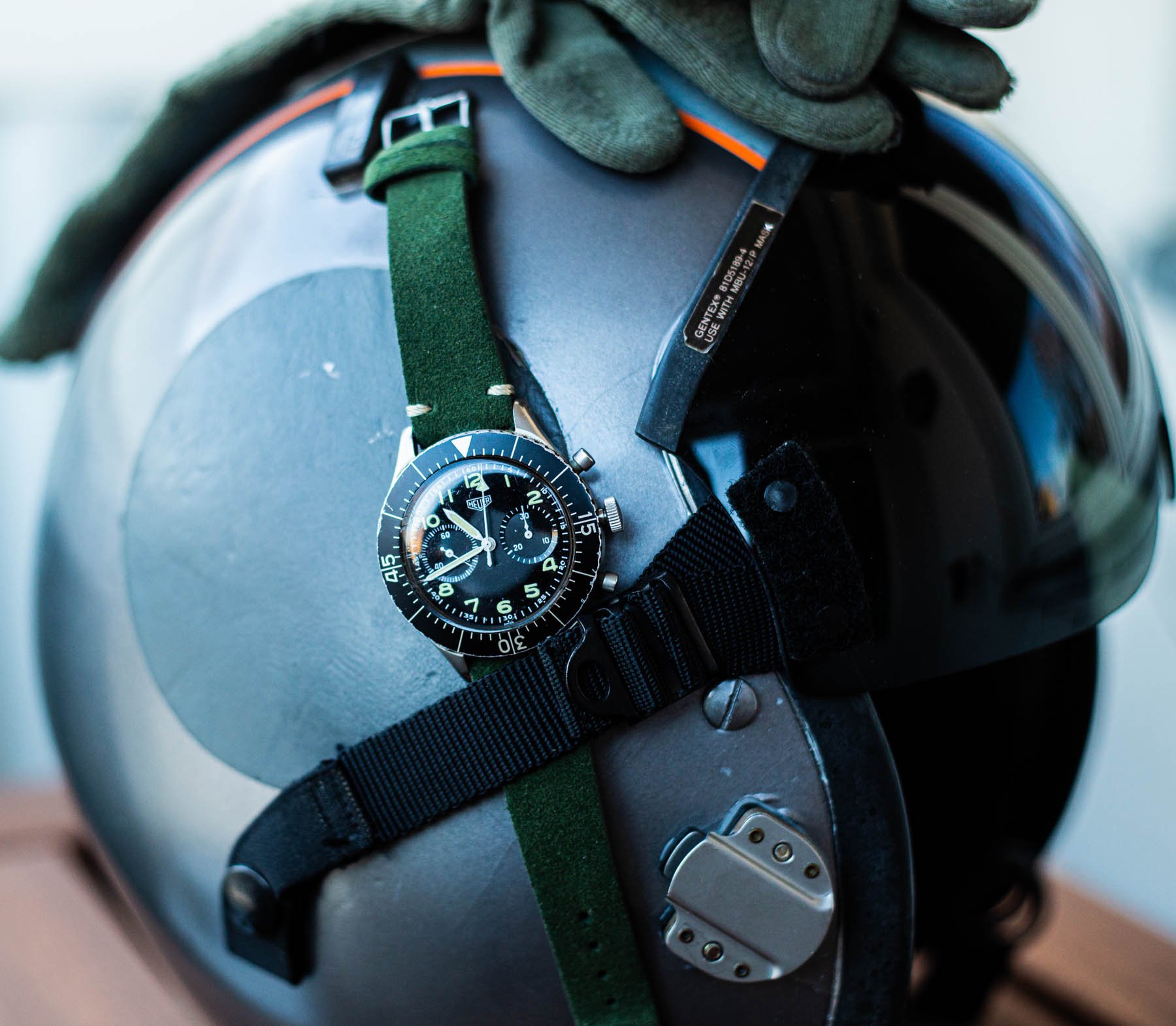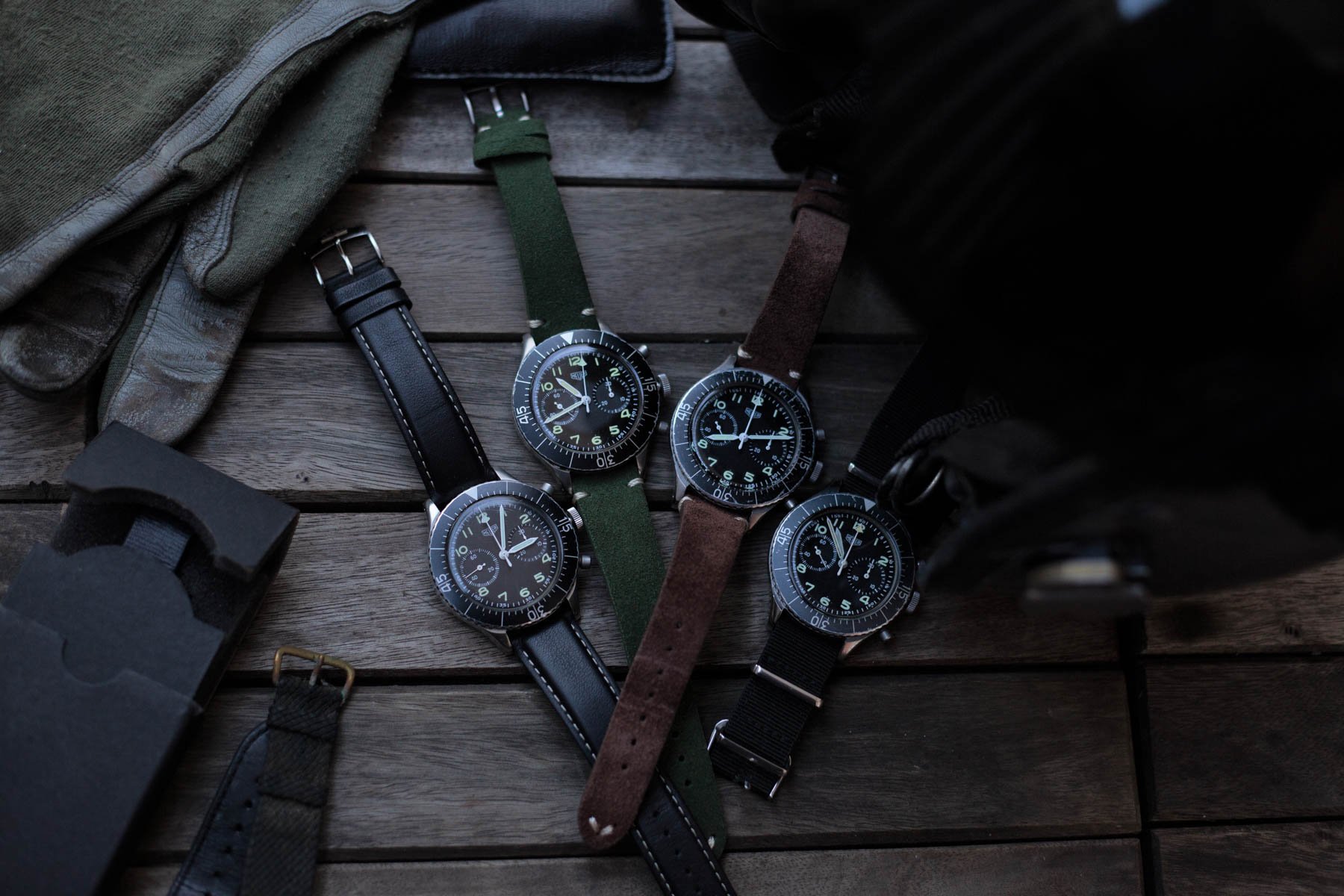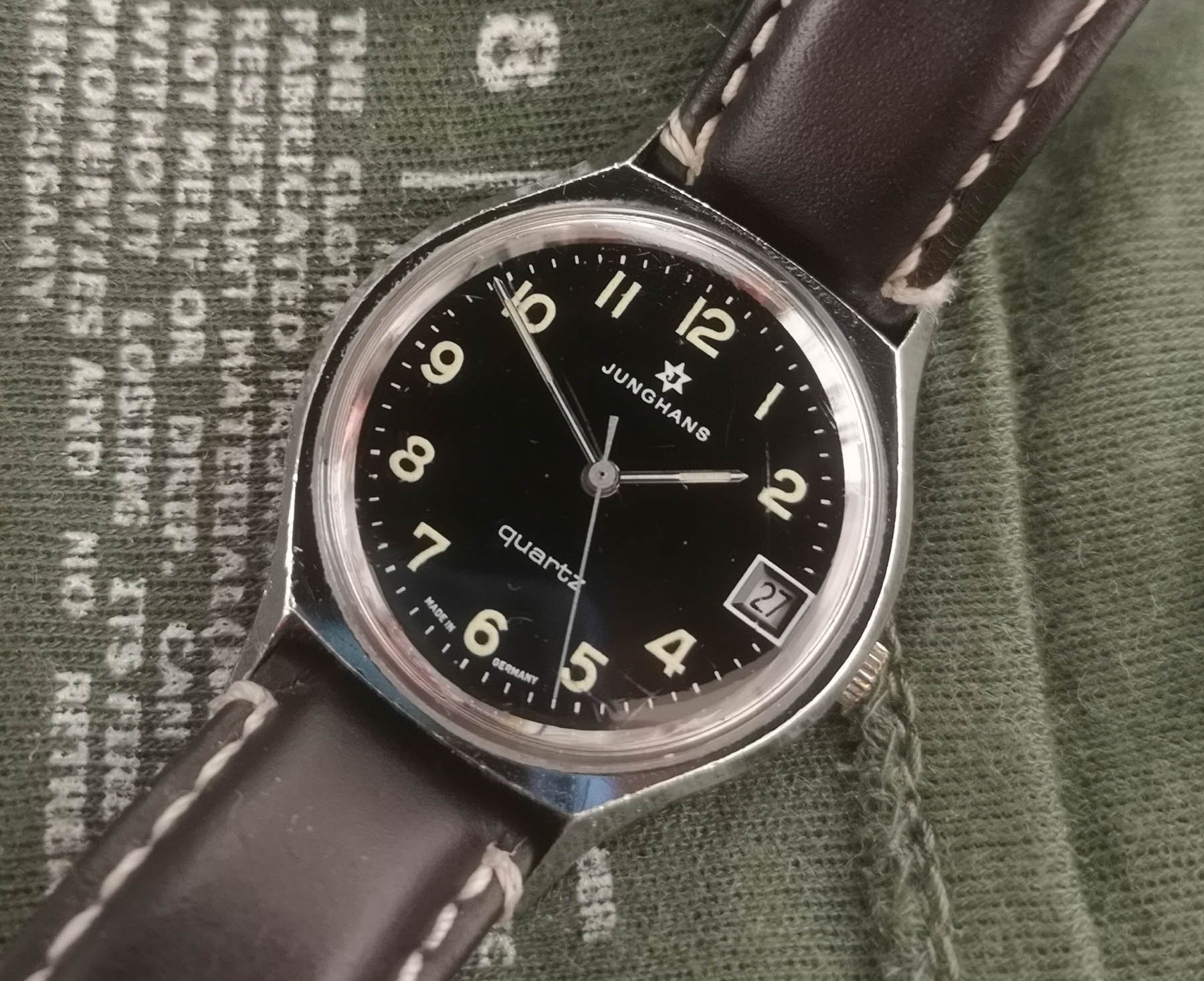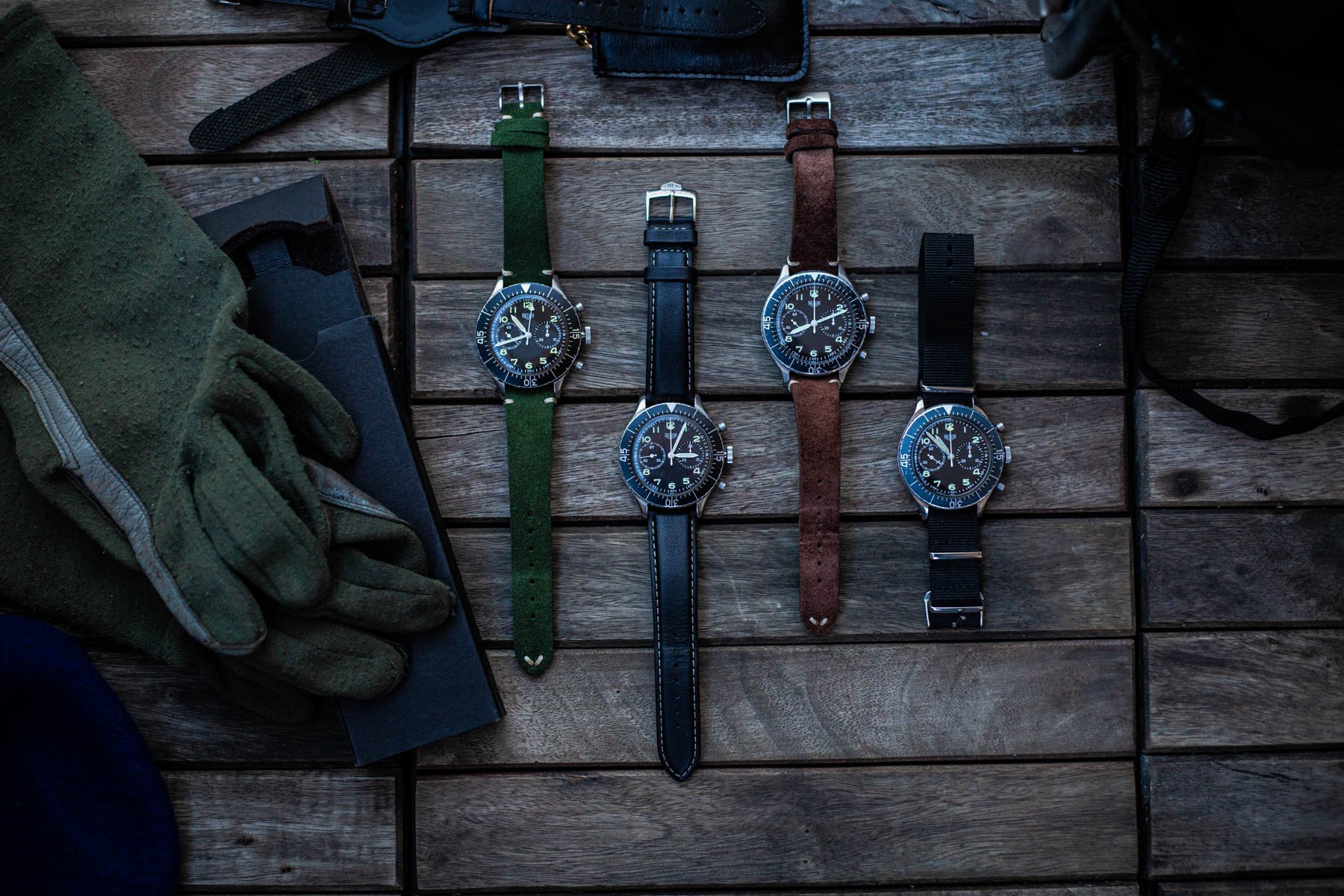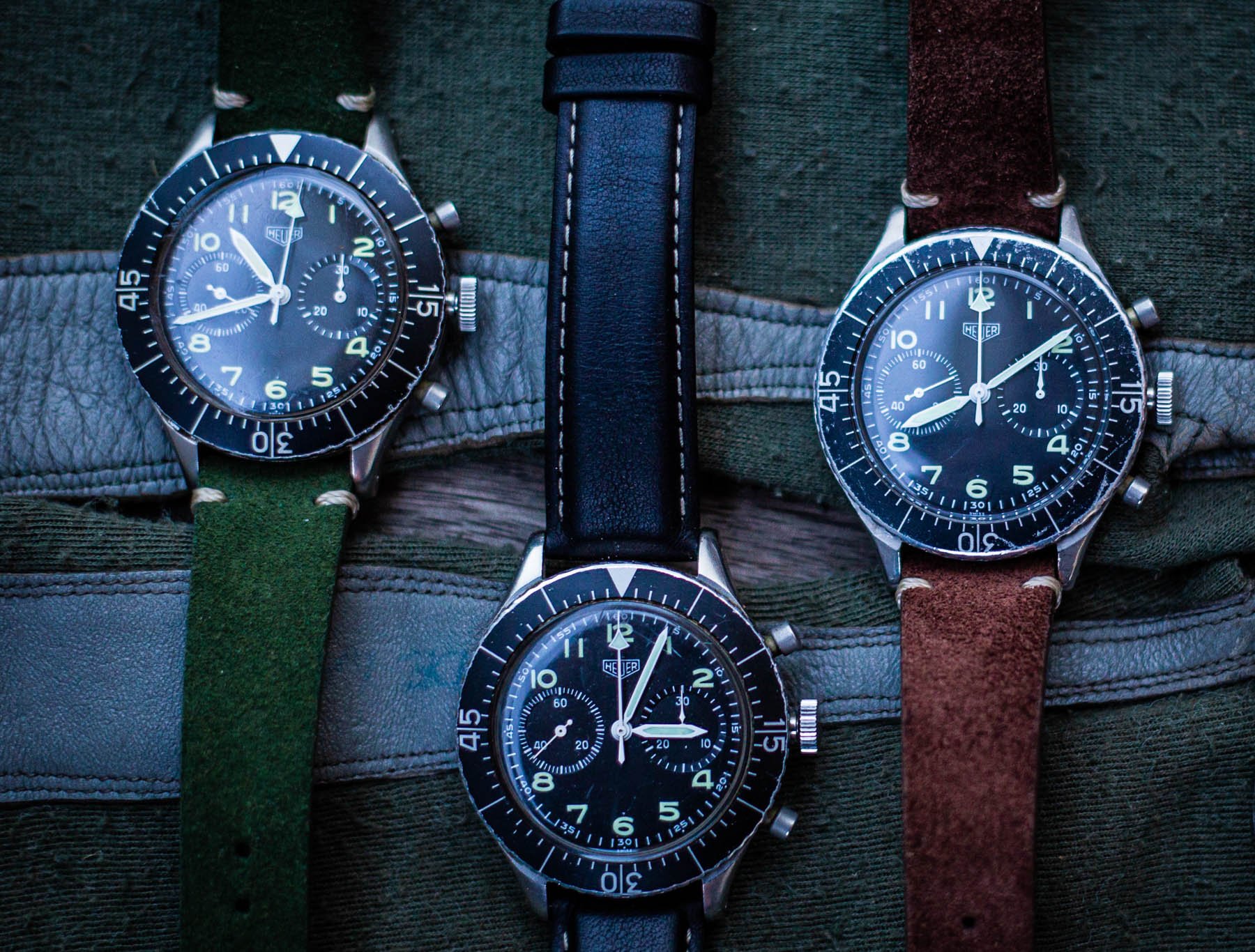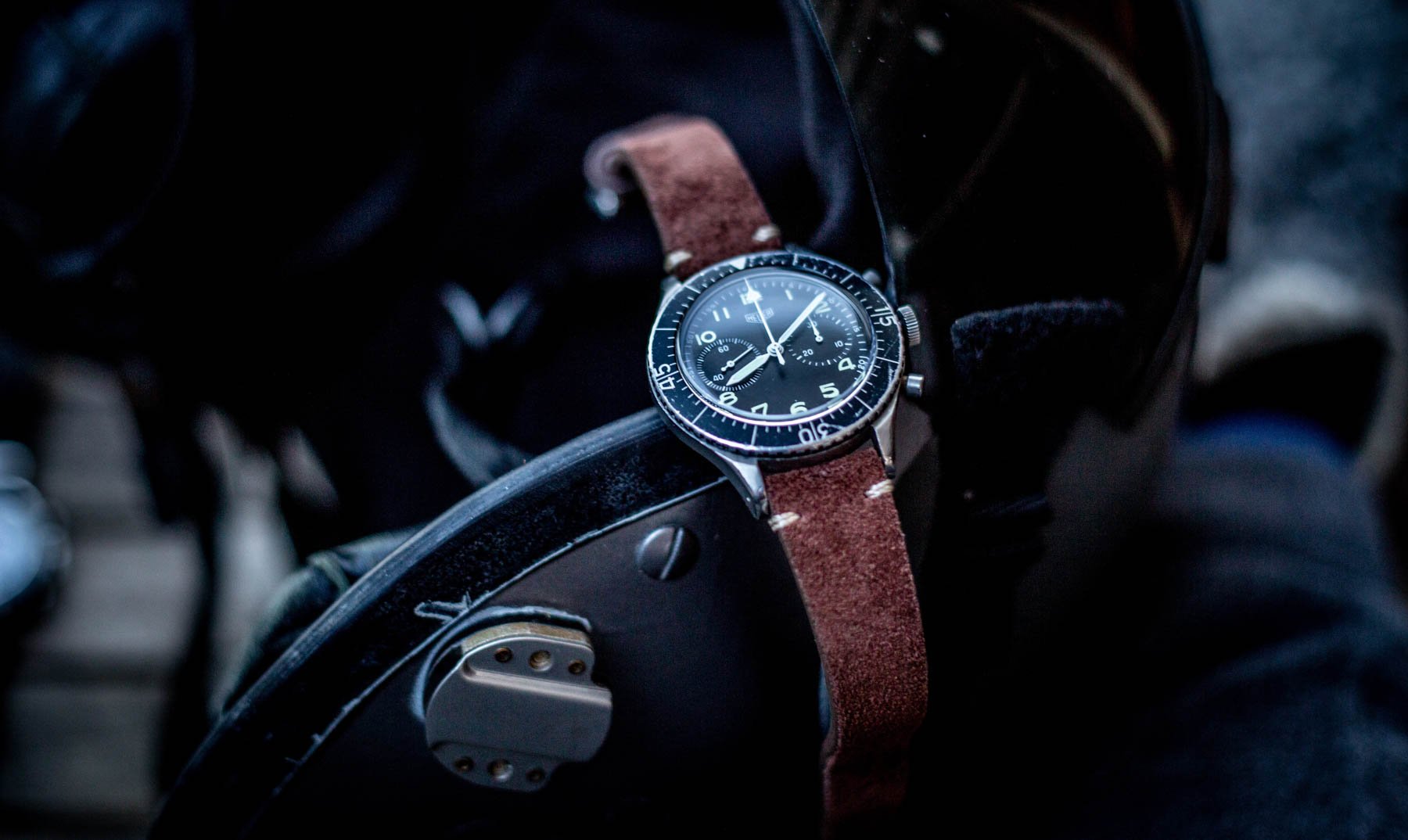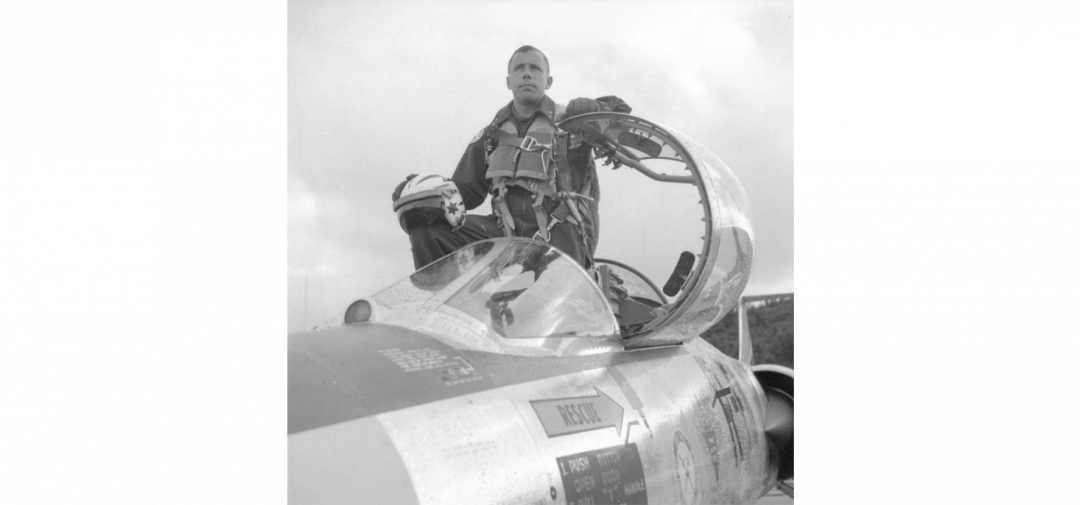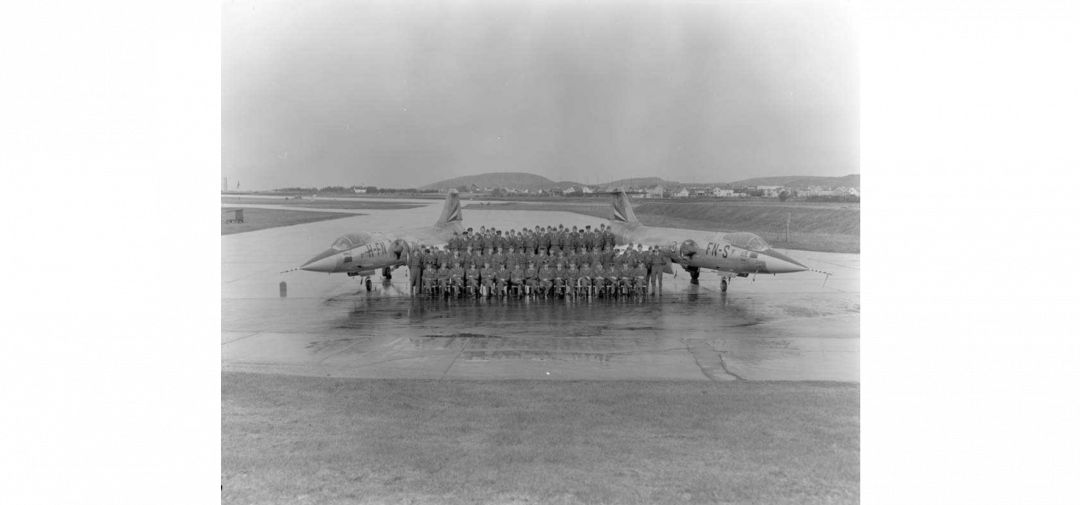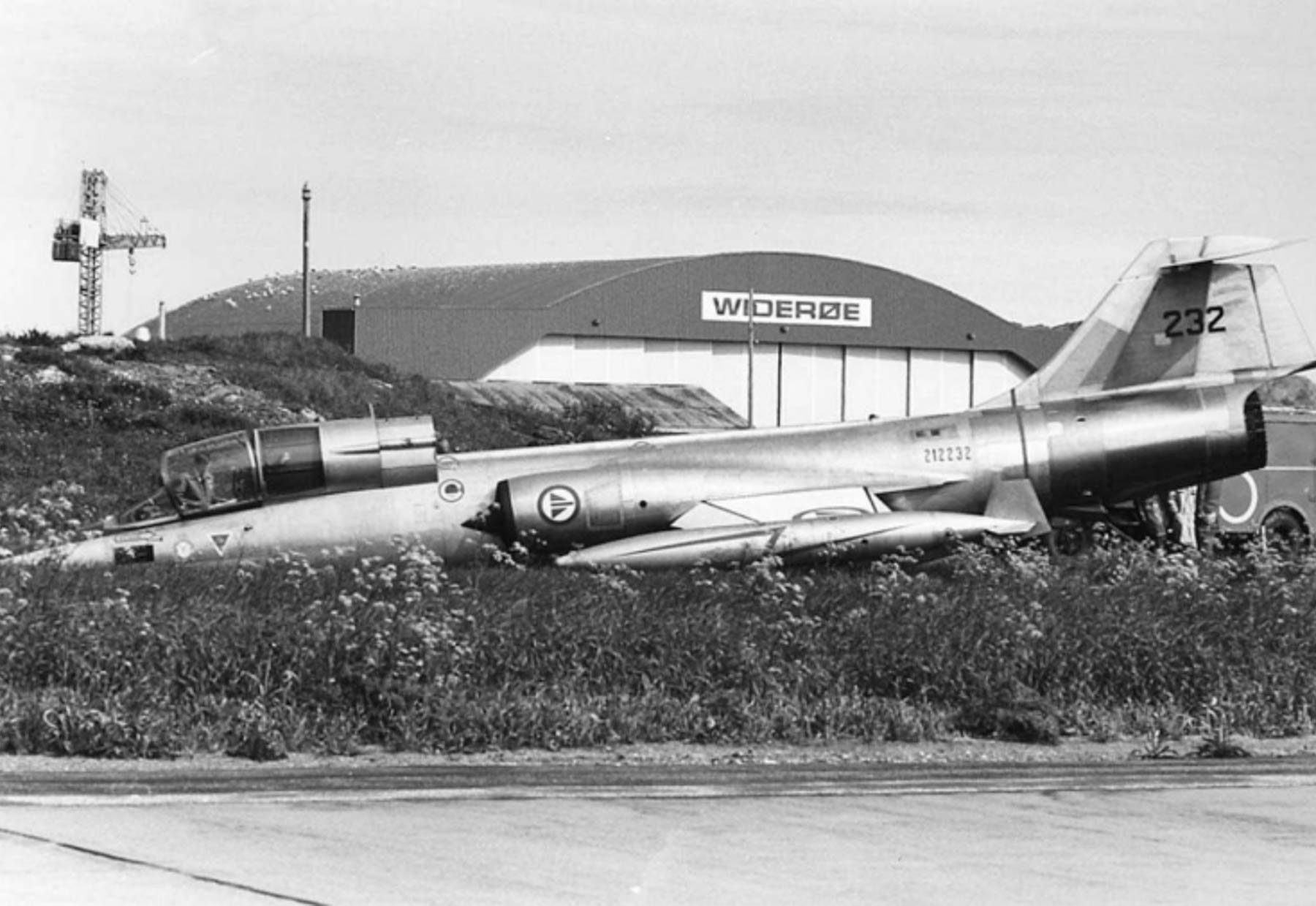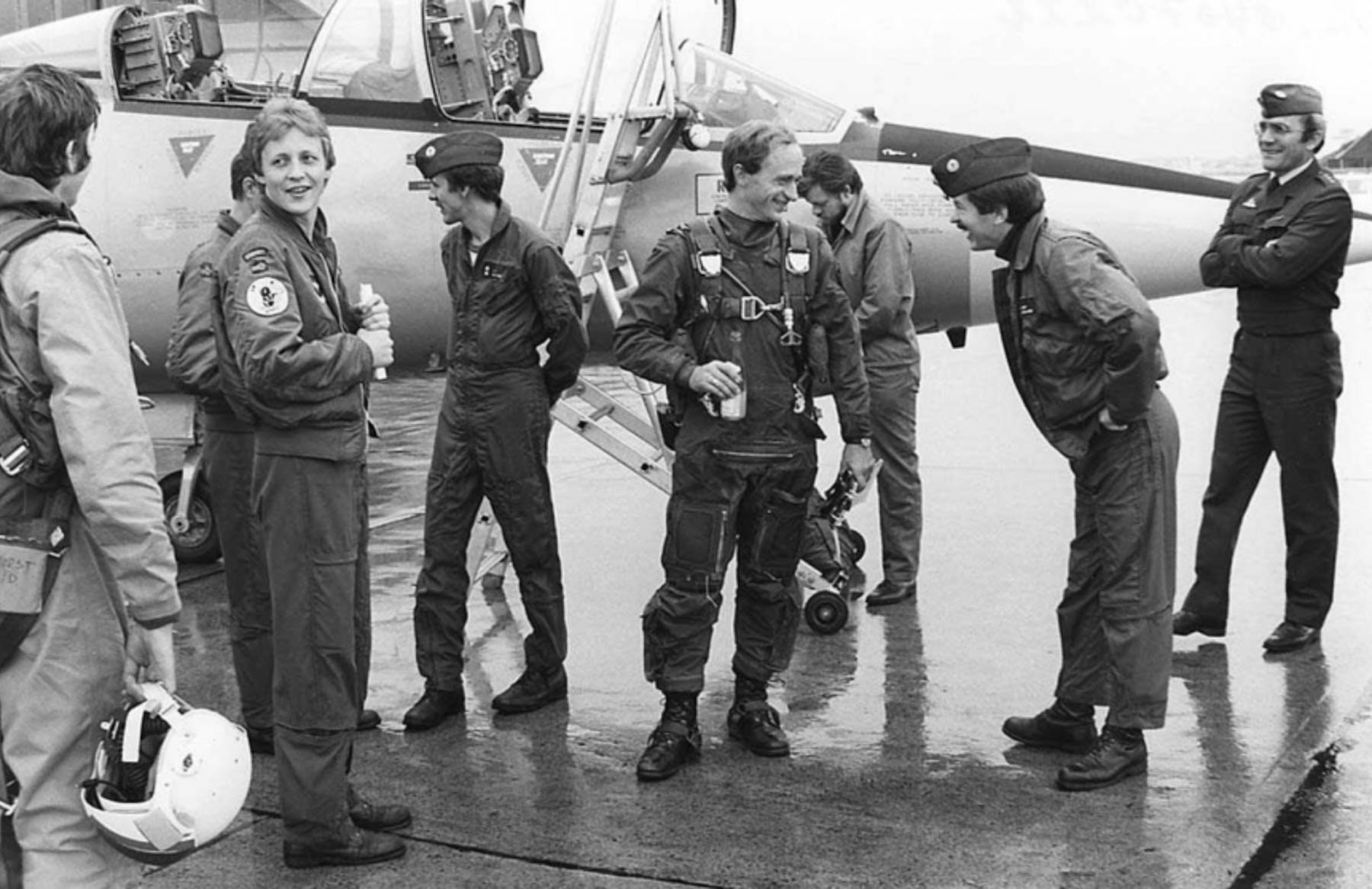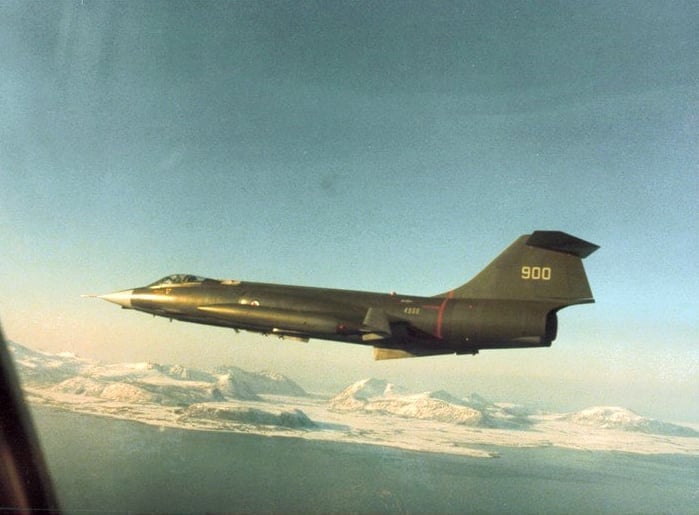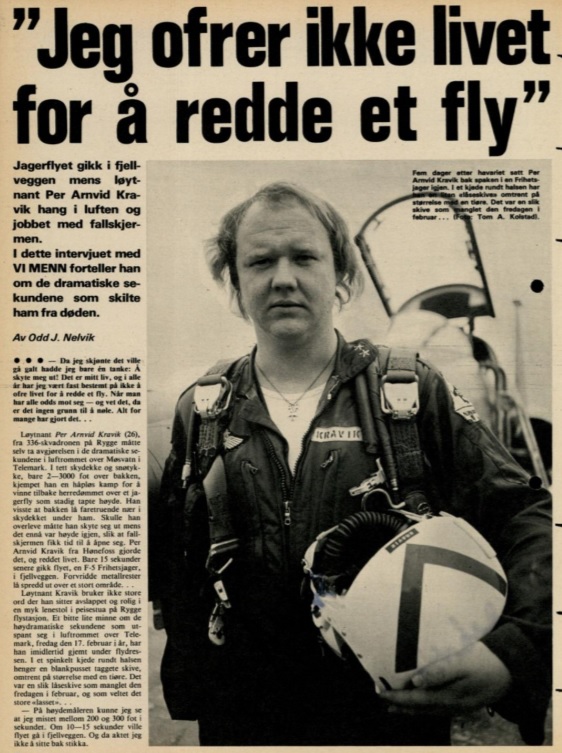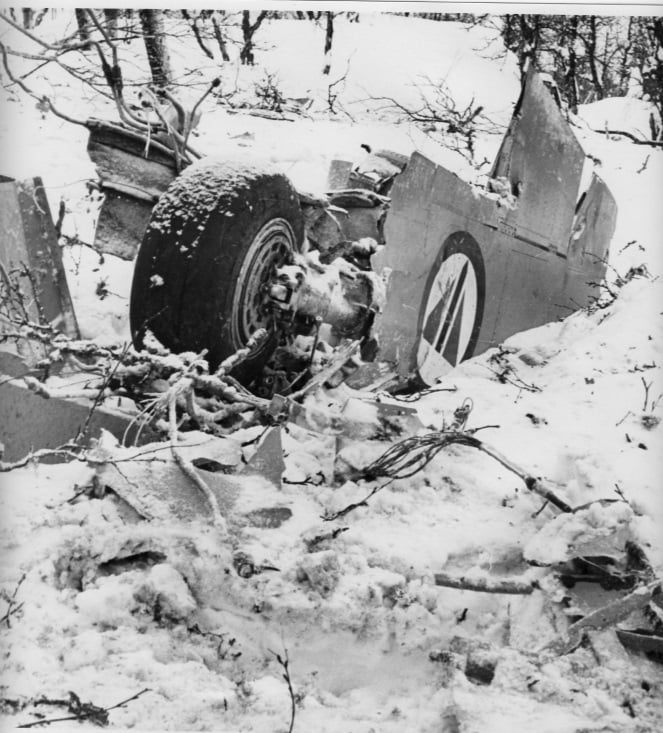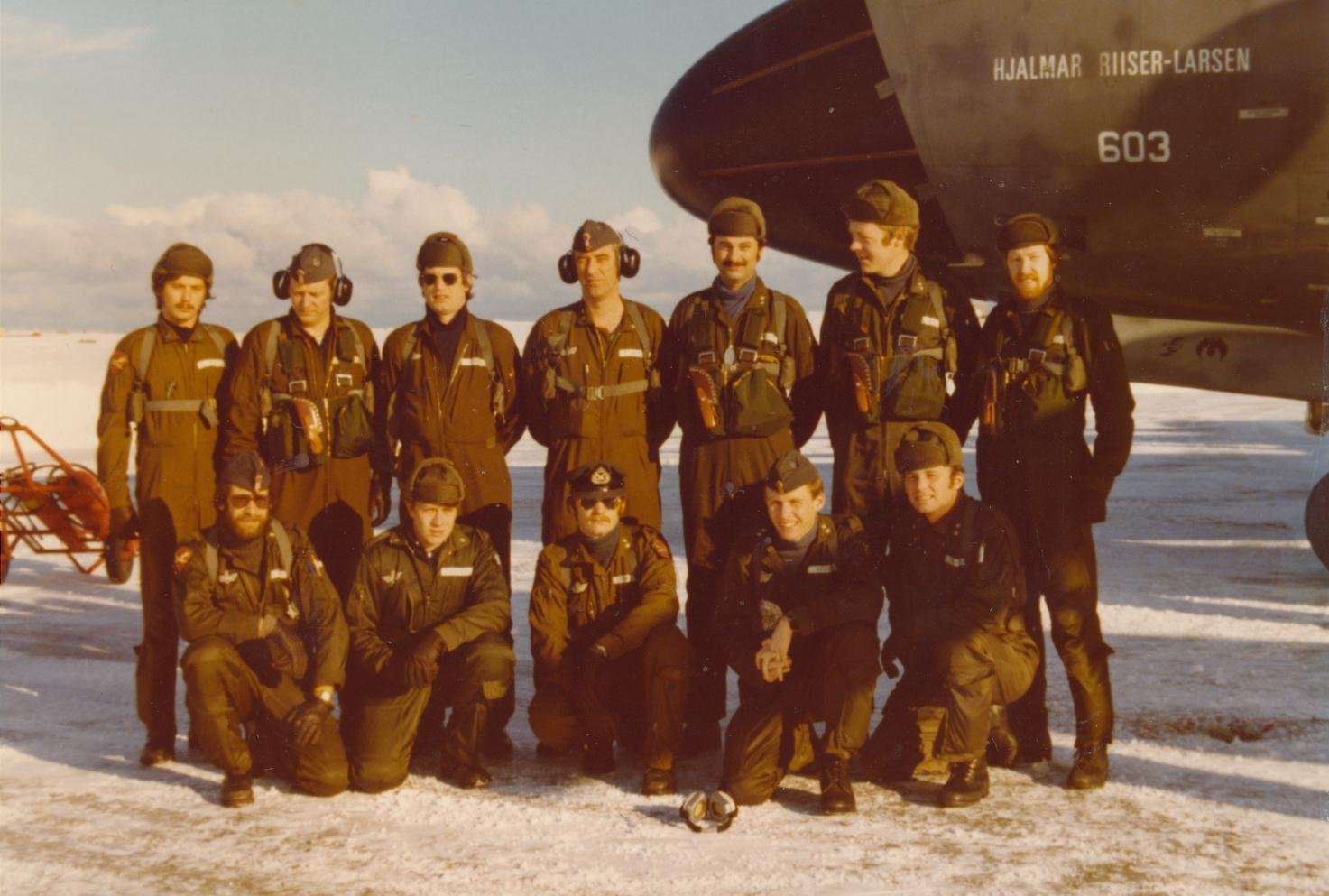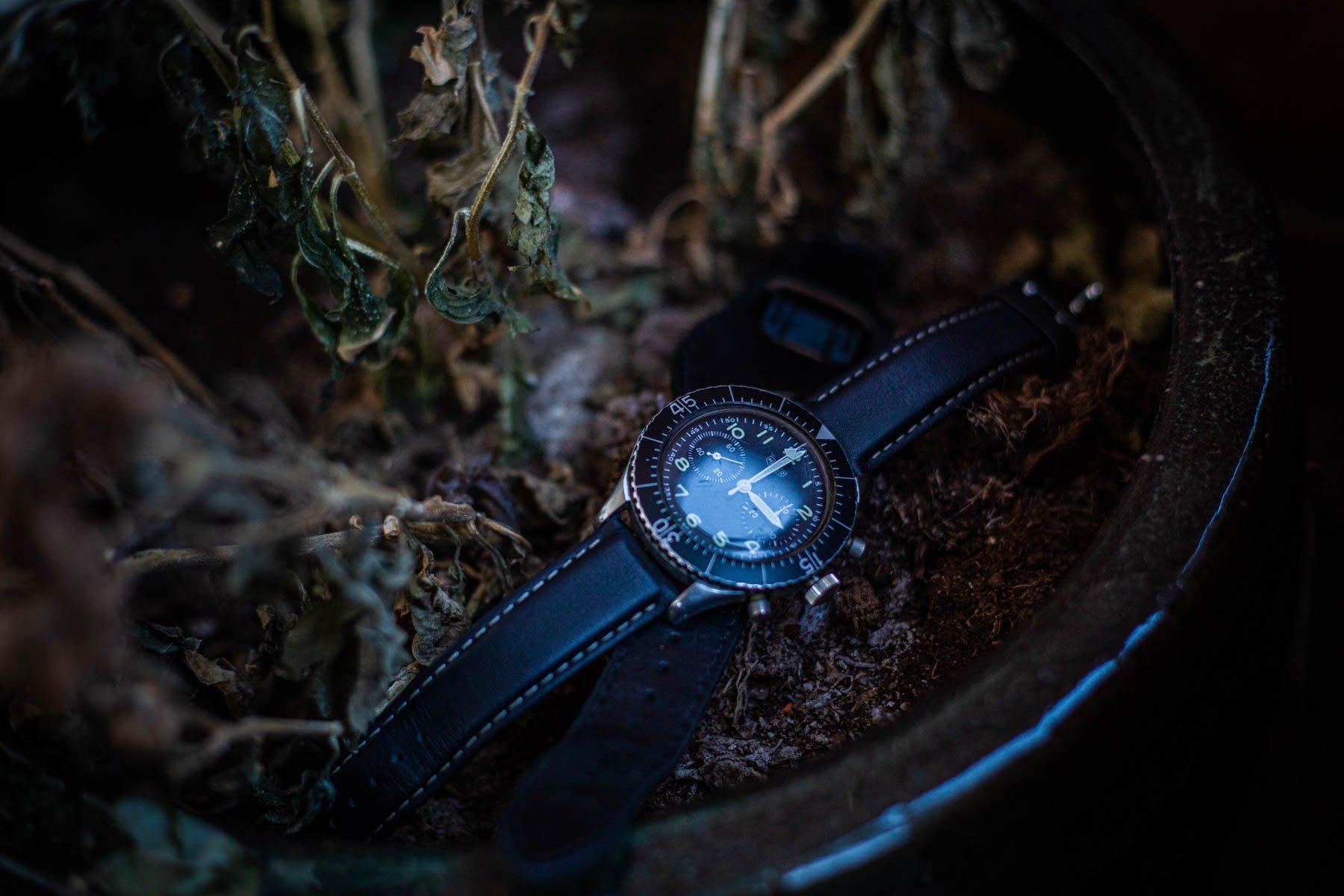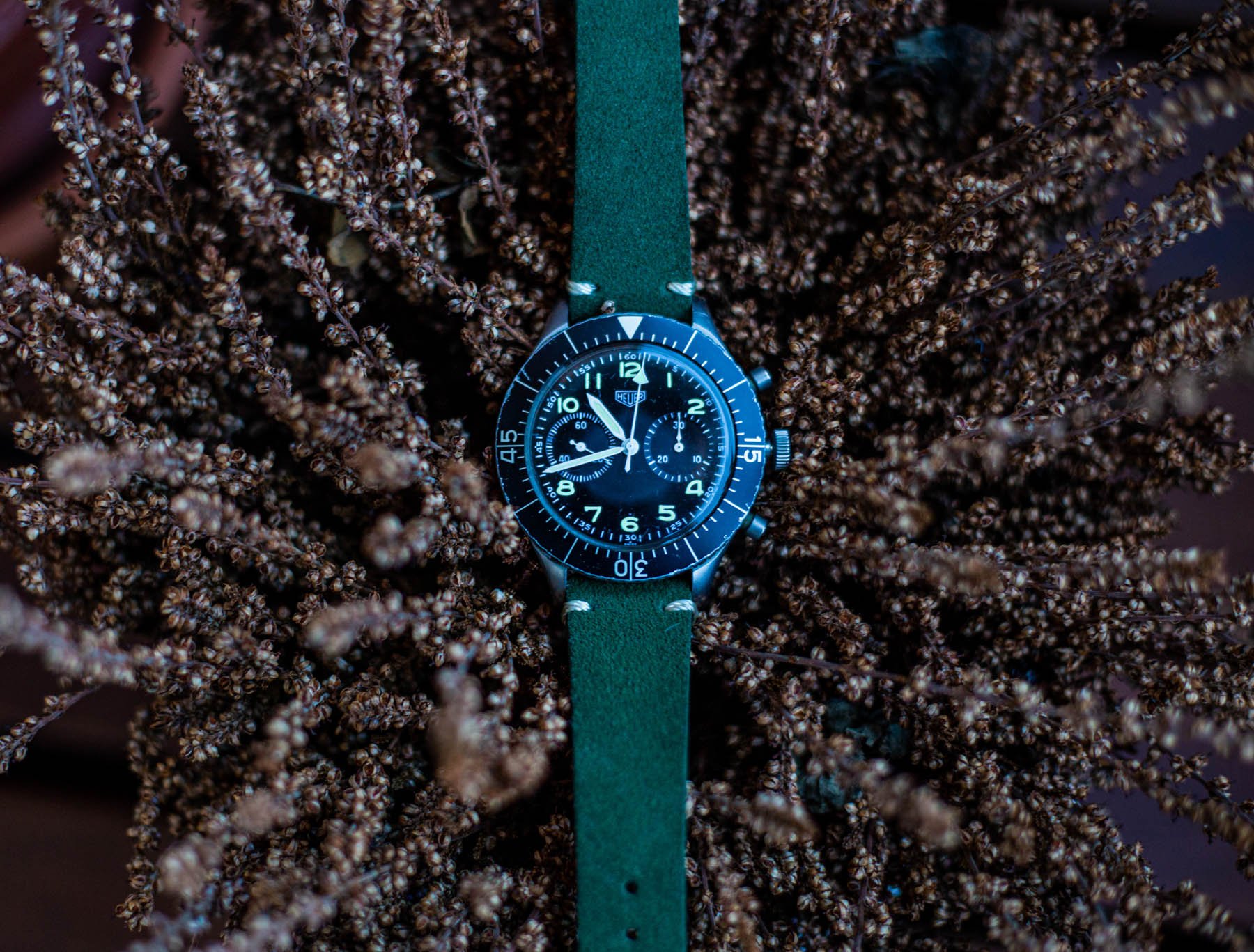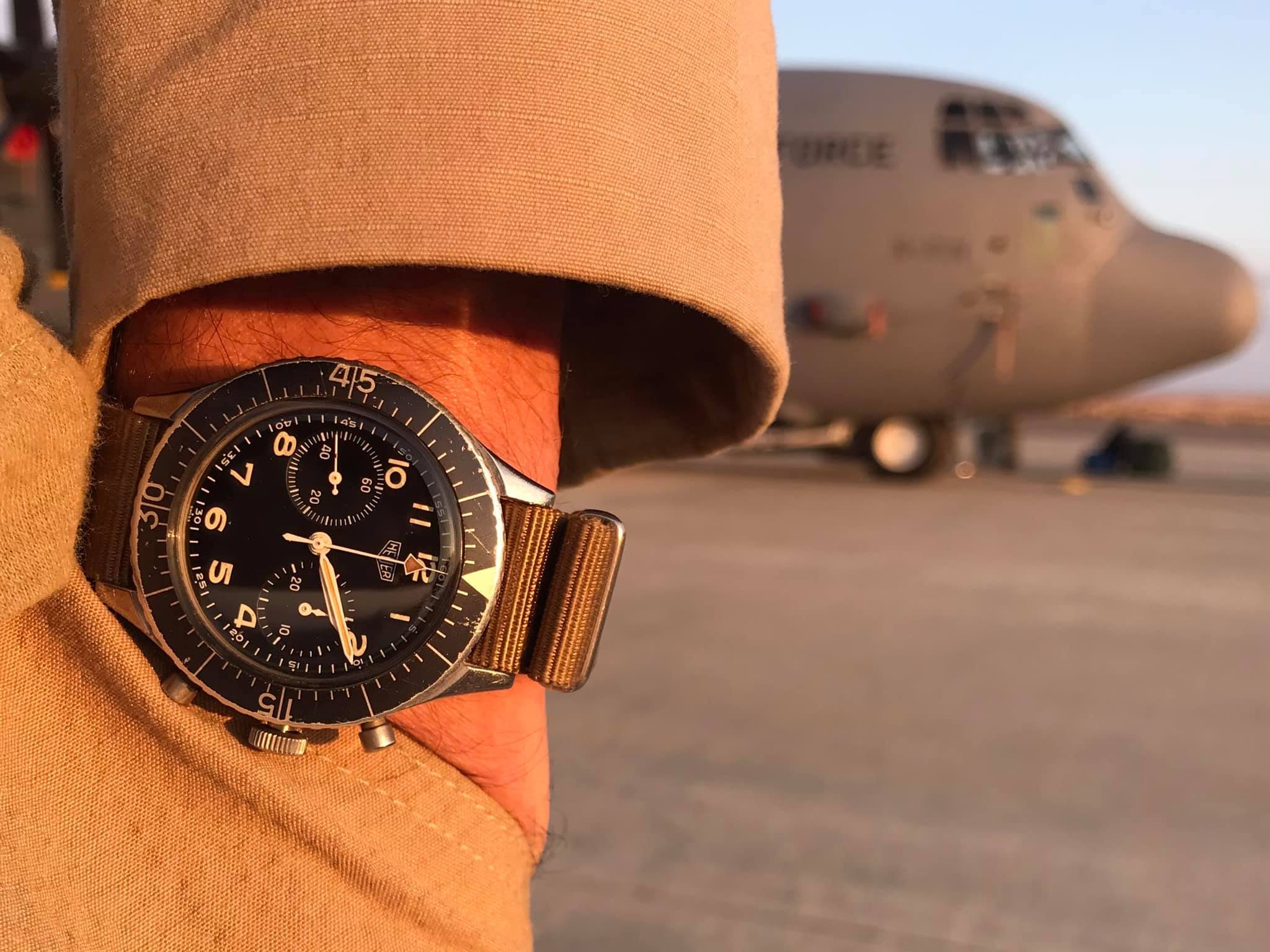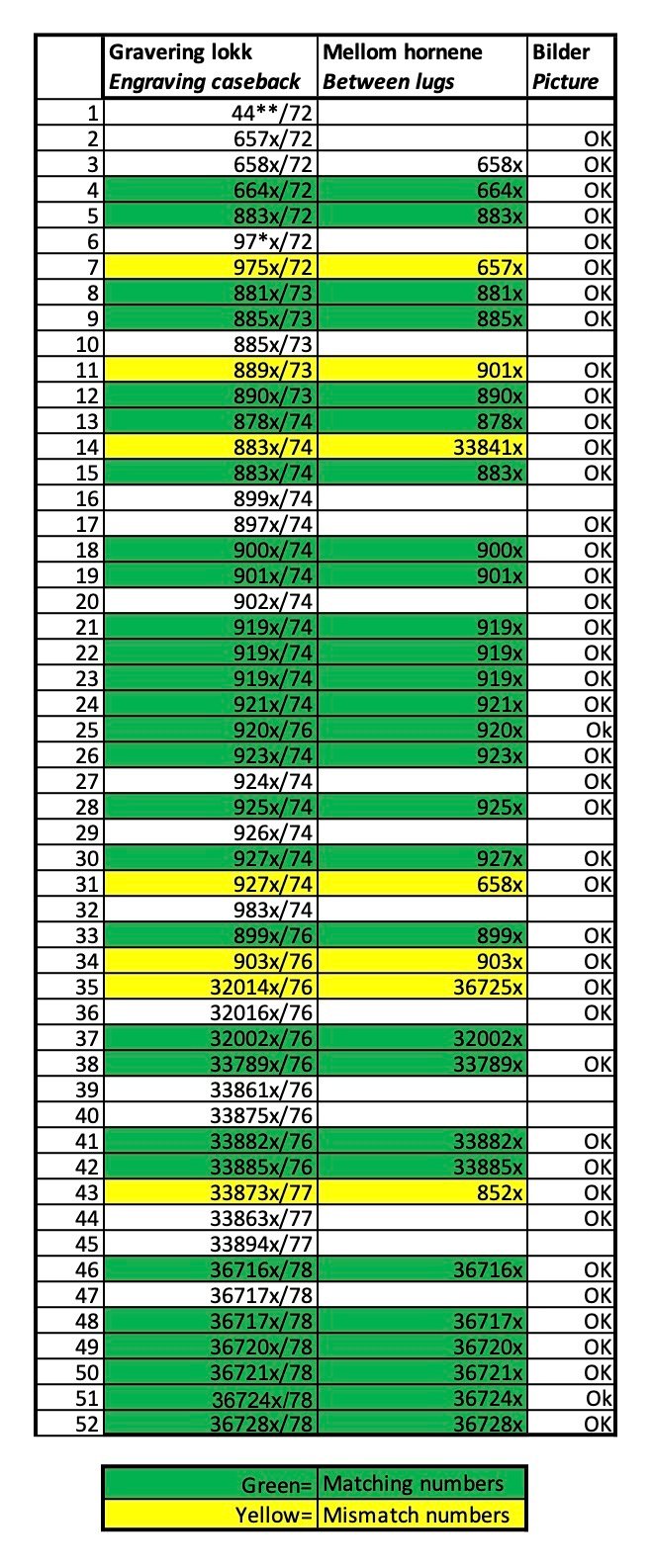The Norwegian Heuer 1550 SG “Luftforsvaret”: An In-Depth History Of A Fascinating Military Model
Recently, we received a very interesting email from a trio of watch fanatics in Norway. The depth of research conducted by Lasse Coucheron, Fredric W. Madsen, and Magnus Berger was truly exceptional. So much so, we’re very proud to feature the result of their endeavors here on the pages of Fratello. We hope you enjoy this deep dive into the Heuer 1550 SG “Luftforsvaret”.
Fredric W. Madsen, Lasse Coucheron, Magnus Berger, and photographer/translator Jonas Eide Leirfall (@vintagekrono)
Stories of the Heuer “Luftforsvaret” (Air Force) have been swarming online and in the media in the last decade. This article will give you a deeper insight into the important role it played in Norwegian aviation history.
Swiss Heuer/Leonidas was incorporated by the TAG Group in 1985, and its history goes far back with producing and providing watches to military forces from many nations. Heuer supplied the Flyback Chronograph, ref. 1550 SG to the German Air Force (Luftwaffe) in 1967–1968, and not long after the Norwegian and Yugoslavian Air Force started using the watch as well. During the Cold War, the West-German forces needed a watch that could tend to a pilot’s every need, and they opted for the 1550 SG. This is why the collectors and watch enthusiasts refer to the watch as “Bund” (Bundeswehr).
In the early seventies, NATO facilitated the purchase of the Heuer “Luftforsvaret” for the Norwegian Air Force (RNoAF), possibly in an attempt to standardize equipment across nations. This Norwegian version of the 1550 SG would come to be known as “Heuer Luftforsvaret”.
- Photo: Jonas Eide Leirfall (@vintagekrono)
- Photo: Jonas Eide Leirfall (@vintagekrono)
- Photo: Jonas Eide Leirfall (@vintagekrono)
Gallery photos: Jonas Eide Leirfall (@vintagekrono)
Historical context
To understand the history of the Heuer “Luftforsvaret” it is important to understand the time and context of why the watch was made and distributed. Norway was a founding member of NATO from 1949. In lieu of the United States’ nuclear umbrella, Norway built the military to defend from a possible Soviet invasion.
From the end of the 1970s, the Soviets started to set up bases for their northern fleet in the Kola-peninsula. From the way the Soviet fleet moved in the Norwegian Sea, it became clear that Norway could easily fall behind the Soviet defense lines at sea, and thus the possibility of military amphibian attacks along the Norwegian coast increased. Because of this, Norway was aided through several channels by the US and NATO to strengthen its infrastructure and gain access to more modernized military equipment.
The first batch of Heuer “Luftforsvaret” watches was delivered in 1972. The model was gradually replaced up until the mid-1980s. It is said that the first squadron to receive the watch was the 718th Squadron at Sola airbase. The watch was primarily given to the operative crew on the Freedom Fighter and F-104 Starfighter jets, surveillance, and counter-submarine aircraft Lockheed P-3 Orion and Bell- and Sea King helicopters. In addition to the pilots, some crewmembers such as weapon system operators, navigators, and machine crew also received the watch.
Some of the crewmembers kept their watches until retirement, and some of the watches were also worn on more modern aircrafts such as the F-16 and the C-130 Hercules.
A Heuer “Luftforsvaret” is shown here on the pilot’s wrist in a Westland Sea King in 1981. The Sea King was incorporated as a rescue helicopter in 1972, but today it is also used as an ambulance helicopter. Photo: Squadron 330.
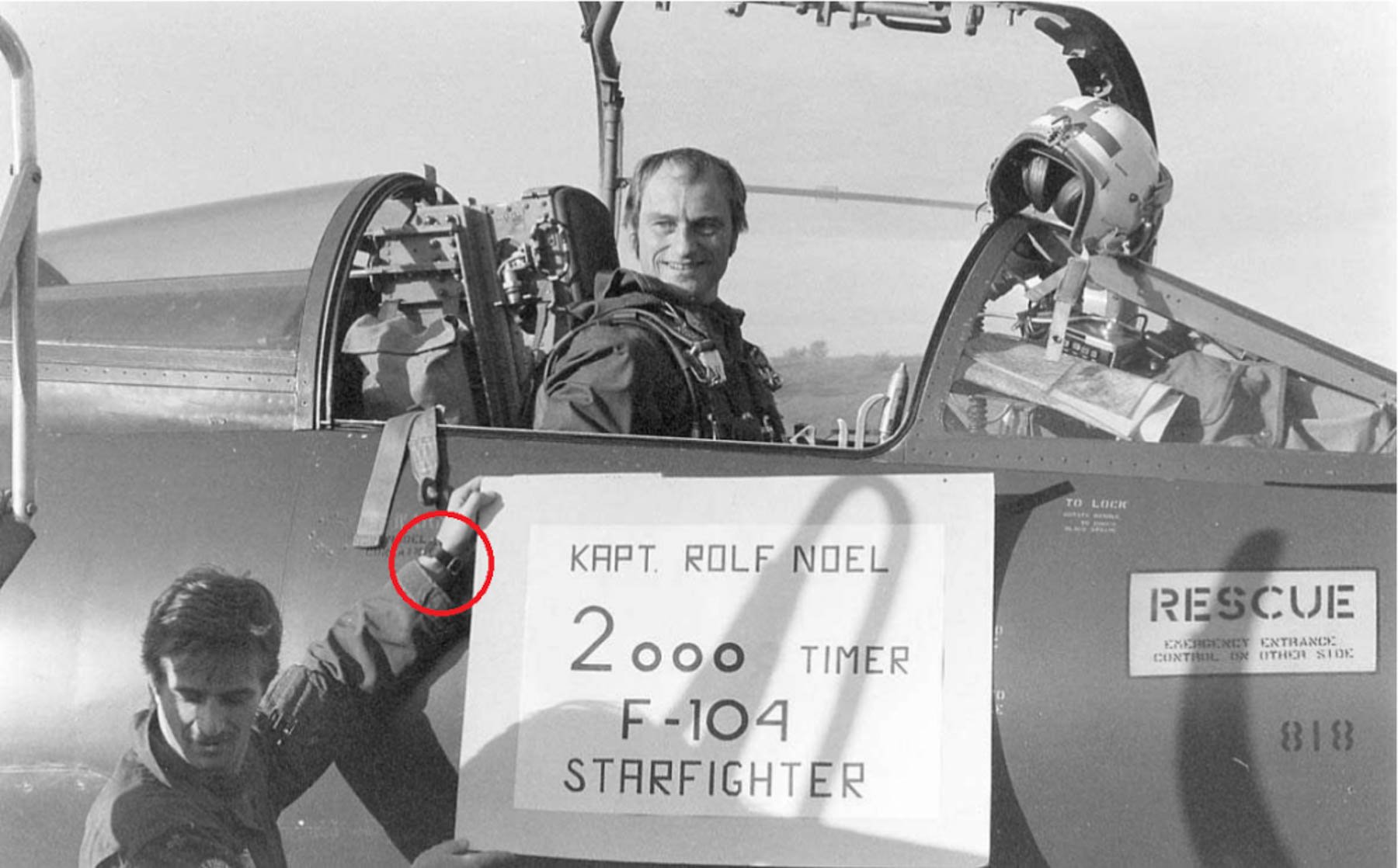
Cpt. Rolf Noel logged 2000 hours in his Starfighter. Notice the bund-strap in this shot. Photo: Digitaltmuseum.no
Photo: Cpt. Per De Lange. P-3 Orion photographed over a Russian submarine in the ’70s. He writes, “We flew tactical missions day and night throughout the year. Oftentimes, we would fly great distances below 200 feet altitude no matter the weather. During those days, we rarely had a mission that didn’t result in spotting several submarines. We dropped [sonar buoys] from the aircraft in specific patterns. Upon contact, our job was to narrow down [the submerged submarines’] exact location, receive attack instructions, and attack with PDC (Practice Depth Charge). PDC is a minor explosive charge that is dropped on the submarine to simulate an attack. It definitely woke up the people in the tin can.
Heuer “Luftforsvaret”
The Heuer 1550 SG was obtained by the Air Force as a “tool watch”. The watch is 42mm in diameter, 13mm in thickness, and was considered a very large watch for its time. It has large Arabic numerals on the dial, and both the numerals and the hands are illuminated so they could be read in the dark during night flying. The crown and the pusher crowns are large so that they could be easily utilized even with gloves.
There are several physical differences between the Heuer Bund and the Luftforsvaret. The most obvious one is the engraving on the back and between the lugs on the watch. The Norwegian model has “LUFTFORSVARET” engraved on the back, in addition to a serial number and the year it was issued for the first time.
From the watches we have identified today, we see that the watches were issued from 1972 to 1978. The watches would be returned after the wearer had finished serving, and so the already engraved watches would be reissued up until the mid-1980s, although this practice varied throughout the different departments. “1550 SG” is engraved between the lugs at six o clock, and the serial number matching the back is engraved between the lugs at twelve o clock.
From the remaining Heuer Luftforsvaret, not all have matching numbers on the back of the case and between the lugs. The reason for this is that the Air Force had its own in-house maintenance and servicing of the watches, done by Luftforsvarets Forsyningskommando (LFK) at Kjeller air base. A system technician would service defective watches. The LFK had detailed service and maintenance documentation from Heuer that they would use when working on the watches. Throughout this process watches were probably “cannibalized” using available parts from other watches. Because of this, the “wrong” case back could end up on a different case.
Another difference between the Bund and the Luftforsvaret is the dial itself. The Bund was issued with five different dials, while the Luftforsvaret was issued with just a “T-only” dial, with a small “T” for “Tritium”, that can be seen right above the 6 on the dial. The watch cases were probably engraved in Norway before they were rolled out to different squadrons because not all serial numbers and years match chronologically with other watches and serial numbers from the same years.
At first glance, the serial numbers and years recorded in the table at the end of this article seem to be chronologically engraved. However, there are a few exceptions to this. For instance, you can see that the models with serial number 899x/76, 920x/76 and 903/76 should have had engravings from around 1974, but were engraved with 1976. These are probably exceptions that weren’t issued with the rest of the watches from 1974.
The serial numbers on the case backs indicate when the watches were issued, but not when they arrived in Norway or when they were manufactured. The version of the 1550 SG that was issued to Germany and Yugoslavia has the same serial numbers between the lugs. Today there is little information on the years the other 1550 SG models were manufactured and issued.
“Luftforsvaret” is a so-called flyback-chronograph. Unlike a regular chronograph where the timer mechanism must be stopped before resetting, a flyback can be reset and restarted with one single push of a button, even when the watch is running. This is very handy for timing in short intervals.
The case is stainless steel with a brushed surface and is traditionally constructed with the design of older chronographs, with two parts of the case with four screws holding it together.
Heuer 8904/73 was worn in a CF-104 Starfighter by Capt. Svenn Oddli with the 334 squadron in Bodø, from 1974 to 1978. The watch has logged almost 800 hours with different CF-104 Starfighters. In the picture from April 1977, you can see the captain in his CF-104 intercepting a Russian Antonov An-12 (Cub).
Inside the case sits a manual Valjoux 230 movement with a 48-hour power reserve, and with a frequency of 18,000vph. The movement also has a “hacking” feature that stops the second hand when you pull out the crown to set the timer. This was especially useful for when the pilots needed to set their watches with complete accuracy or to synchronize several watches simultaneously.
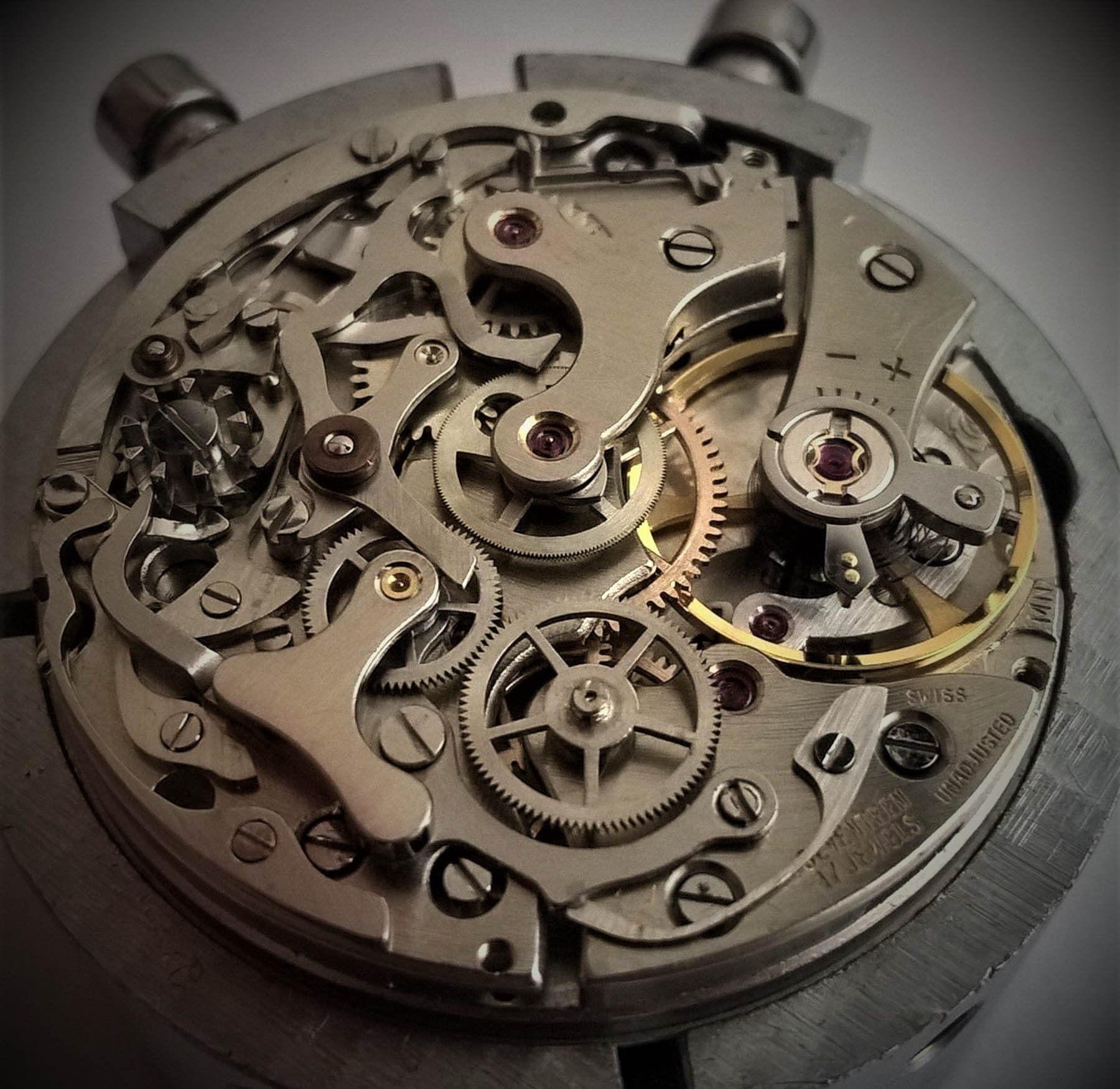
A Valjoux 230 on watchmaker Simen Solvold’s workbench, he is a Norwegian specialist on the Heuer Luftforsvaret.
The built-in clock in the F-5 Freedom Fighter was not accurate enough, according to some pilots, with a deviation of 2–3 minutes per hour. One pilot stated that during operations complete synchronization between the aircraft was of high importance, especially during “time on target” missions. There could be several aircraft in a formation that needed to get to their target within a short time window — for example within 10 seconds.
Watches with excellent accuracy came in handy during CF-104 operations. The watches were issued on black leather “bund” straps. This special design had several practical features: the cockpit can reach very high and very low temperatures, and the metal casing on the backside of the watch could be very uncomfortable against the skin. This strap would also protect the wearer in case of a fire, to avoid possible injuries.
Phasing out
It has been stated that some pilots felt that the mechanical movement was not as accurate as a quartz counterpart, and that was why this model was gradually phased out in the mid-’80s. However, there have been other pilots that have stated that they were very satisfied with the quality of the watch and how it could handle the G-force well in thin air and high altitude.
- Photo: Jonas Eide Leirfall (@vintagekrono)
- Photo: Jonas Eide Leirfall (@vintagekrono)
- Photo: Jonas Eide Leirfall (@vintagekrono)
Gallery photos: Jonas Eide Leirfall (@vintagekrono)
The most probable reason for the watch being gradually replaced was the cost of maintenance and servicing. In 1978/79 the Air Force spent around 40,000 NOK yearly on watch maintenance. In 2020, that equates to around 160,000 NOK (upwards of 16,000 Euros). Because of this, it was far more economical for the Air Force to replace the Heuer with the simpler quartz-watch Junghans 633.60.
Few remaining watches
For almost 10 years, a Norwegian watch enthusiast on the watch forum “Tidssonen” has been tracking down the remaining Heuer Luftforsvaret and compiling an extensive overview thereof.
Fifty-two pieces have been identified. Based on the testimony of the former pilots, it is estimated that around 200 timepieces were issued. The majority of the watches that were issued were returned to Luftforsvaret after time serving, but unfortunately, they were destroyed after being phased out. One man who served in Wingops at Rygge airbase said that in 1984 they destroyed returned watches with a hammer as they would not be used anymore.
Some pilots however were allowed to keep their watch throughout their whole career in Luftforsvaret, while others may have filled out a form for lost effects (TS), effectively stating they have lost the property. Eventually, the watches ended up in boxes and drawers, forgotten over the years. One Heuer Luftforsvaret surfaced in a military surplus storage unit in the early 2000s, and that one has probably been forgotten at a depot until it was eventually sold.
- Photo: Jonas Eide Leirfall (@vintagekrono)
- Photo: Jonas Eide Leirfall (@vintagekrono)
- Photo: Jonas Eide Leirfall (@vintagekrono)
Gallery photos: Jonas Eide Leirfall (@vintagekrono)
Only a few of the watches were kept by the original owner up until today. Some of these were sold to collectors with written documentation, pictures, and patches, and (on very special occasions) the pilot helmet. Extensive data on the watch history is limited, but these “complete sets” have proven to be highly sought after and a “holy grail” among collectors.
The Heuer Luftforsvaret is a rare watch considering the low number of remaining watches today, but what makes the pieces really unique is the history connected to each of them. In other words; if a watch could talk, a Heuer Luftforsvaret is probably the one you would want to spend an evening with at the bar.
- Photo: Digitaltmuseum.no
- Photo: Digitaltmuseum.no
- Photo: Digitaltmuseum.no
- Photo: Digitaltmuseum.no
- Photo: Digitaltmuseum.no
A wristful of history
Several of the watches were used by pilots on F-5 Freedom Fighters and F-104 Starfighters, some of the most spectacular fighter jets ever created. The Starfighter set two world records in the seventies, both as the fastest and the highest-flying jet fighter in the world. The pilots on these aircrafts had nerves of steel, as both the F-5 and the F-104 were very hard to pilot, and maintenance was not always up to date. Thirteen out of 45 Norwegian Starfighters (29 percent) were lost, and six Norwegian pilots and a technician lost their lives in plane crashes.
Up until 1977, twelve jet fighter pilots lost their lives in plane crashes with the F-5 Freedom Fighter in Norway. These dire numbers paint a picture that too many young men lost their lives way too early serving Norway. The Luftwaffe also experienced great losses with its Starfighters, and the planes were humorously given nicknames like “Witwenmacher”, “Fliegender Sarg” and “Erdnagel” — loosely translated into “Widowmaker”, “Flying coffin” and “Ground Nail”.
One dramatic story is tied to the watch (ref. 9038/76) that was issued to Lieutenant Per Arnvid Kravik with the 336th squadron, Rygge air base, in 1976. The watch was sitting on Kravik’s wrist during a flight on the 17th of February 1977, when his F-5 Freedom Fighter suffered a technical malfunction that took out the connection between his control stick and the aircraft elevator. This resulted in Kravik being forced to eject himself from the aircraft during highly critical circumstances.
After the ejection the parachute deployed, but as chance would have it the ejection seat itself got tangled up in the parachute. The seat had ripped out an entire section of the parachute, and two big holes were burnt into the fabric as the smoldering hot engine came into contact with the parachute. The seat itself remained entangled in the parachute during the descent, right on top of the pilot’s head. Miraculously, he managed to keep the chute from collapsing on the way down, and he landed in a pile of snow close to Møsvatn in Telemark. Kravik survived the crash and the watch would remain untouched in his pilot bag for 43 years. Eventually, the watch was purchased and restored by a Norwegian private collector in 2020.
Lieutenant Kravik retold the dramatic few seconds that saved him from certain death in Vi Menn, on the 17th of February, 1977.
The Luftforsvaret Heuer (ref. 9002/74) also has a story to tell. The watch belonged to Captain Per De Lange. In the early ’80s a large hunt for what was believed to be a Russian submarine in the Hardanger fjord ensued. Two crews from airport Flesland with a P-3 Orion equipped for counter-submarine warfare flew around the clock for over a week. It is important to note that there are several factors in these deep fjords that can disrupt the sonar technology used by the aircrafts. Massive mountain walls could produce “false echos”, freshwater mixed with saltwater could disrupt sound signals, and so could alternating temperatures.
Photo: Per De Lange. Per can be seen on the far left on the first row wearing his Heuer 9002/74, in front of the P3C Orion 6603, named after the officer and aviation pioneer Hjalmar Riiser-Larsen.
Despite these factors, the rules of engagement were to drop 1,000 pounds of deepwater explosives. They dropped a number of explosives following a specific pattern but never received words of confirmation that they ever hit the target. For all we know, there are remains of a submarine deep inside the fjords to this day. Stavanger Aftenblad wrote: “For a time there was a general feeling of actual war in the fjords of Sunnhordland. Frigates and Orion-jets operated on high alert…” De Lange would continue serving on missions across the world with the C-130 Hercules, including the Iran-Iraq war, Sarajevo, Kosovo, and Afghanistan until his retirement in 2004.
Heuer “Luftforsvaret” as an collector’s item
The interest and demand for vintage military watches, especially chronographs, has grown dramatically throughout recent years. “Anyone” can obtain an exclusive luxury watch from his or her local watch dealer or on the second-hand market today, but watches with unique and detailed history are not something you come across every day. This is made even clearer when you look at the price development. In November 2020 during the Phillip’s Auction in Genève, captain Riise’s 9233/74 were among the items up for grabs. After a bidding war the item ended up going for ca, 250,000 NOK (ca. 25 000 Euros including fees).
Since there are so few remaining Heuer Luftforsvaret compared to the Heuer Bund, the watch itself is highly sought after, and watches with documented history are very rare to find.
- Photo: Jonas Eide Leirfall (@vintagekrono)
- Photo: Jonas Eide Leirfall (@vintagekrono)
- Photo: Jonas Eide Leirfall (@vintagekrono)
Gallery photos: Jonas Eide Leirfall (@vintagekrono)
In 1990 when NATO and the members of the Warsaw-pact entered an extensive arms control agreement, the Cold War effectively ended. Following this, a great number of military airplanes, helicopters, tanks, and equipment were scrapped, but part of this history still lives within the remaining Heuer Luftforsvaret watches.
Perhaps some watch enthusiasts had dreams of a career in the Air Force, and with this watch, you can see yourself in the cockpit of a jet fighter on a mission during the Cold War. There are even a select few who still wear the watch today, in active duty.
Photo: Geir Magnussen. Magnussen is a pilot in 335 Squadron on a C-130J. The watch has been on several active missions in Iraq and Mali during the past two years. Originally the owner of the watch was Per Sagflott, a pilot on an F-104 and an F-5 in Ørland, Norway.
Specifications on the Heuer 1550 SG “Luftforsvaret”:
- Diameter: 42 mm
- Thickness: 13 mm
- Lug-to-lug: 20 mm
- Case Material: Stainless steel
- Dial: Black
- Glass: Domed Plexiglas
- Water Resistance: 200 meters (factory standard)
- Strap: Black leather bund
- Movement: Valjoux 230
- Type: Mechanical, Manual Features: Hours, minutes, small seconds, flyback chronograph Frequency: 18.000 vibrations/hour
- Power reserve: 48 hours
List of identified Heuer Luftforsvaret (March 2021):
Sources:
- Deployant.com — Review: The Heuer Bundeswehr 1550 SG
- Timeline.watch — 1967 Heuer Bundeswehr fly back
- Fratellowatches.com – Leonidas Heuer bund chronographs
- Lasse Coucheron — Testimonies from approximately 70 former pilots from Luftforsvaret
- Dagens Næringsliv — «Klokken Heuer 1550 SG er en yndling blant norske samlere»
- Finansavisen — «Norsk pilotklokke solgt for 250.000 kroner»
- Den Norske Atlanterhavskomité — Atlanterhavskomiteen.no
- Materialamt der Luftwaffe — Technisches handbuch 1550 SG (Last ned PDF)
- Hodinkee.com — Editorial: The case for bund straps
- Digitaltmuseum.no — Historier fra den kalde krigen – ubåtjakt i Andfjorden
- Vi menn nr. 22, 1977 — “Jeg ofrer ikke livet for å redde et fly”
- Statens havarikommisjon for Forsvaret — Havari 17. februar 1977
- Stavanger Aftenblad — Ubåtjakt
- Norske militærflyulykker under den kalde krigen — Sondre B. Hvam, NMF
- Bodø Luftfartshistoriske forening — Ulykker under Den kalde krigen
- Venner av Luftforsvaret — A special thanks to Jonas Eide Leirfall (@vintagekrono) for translation and pictures.





